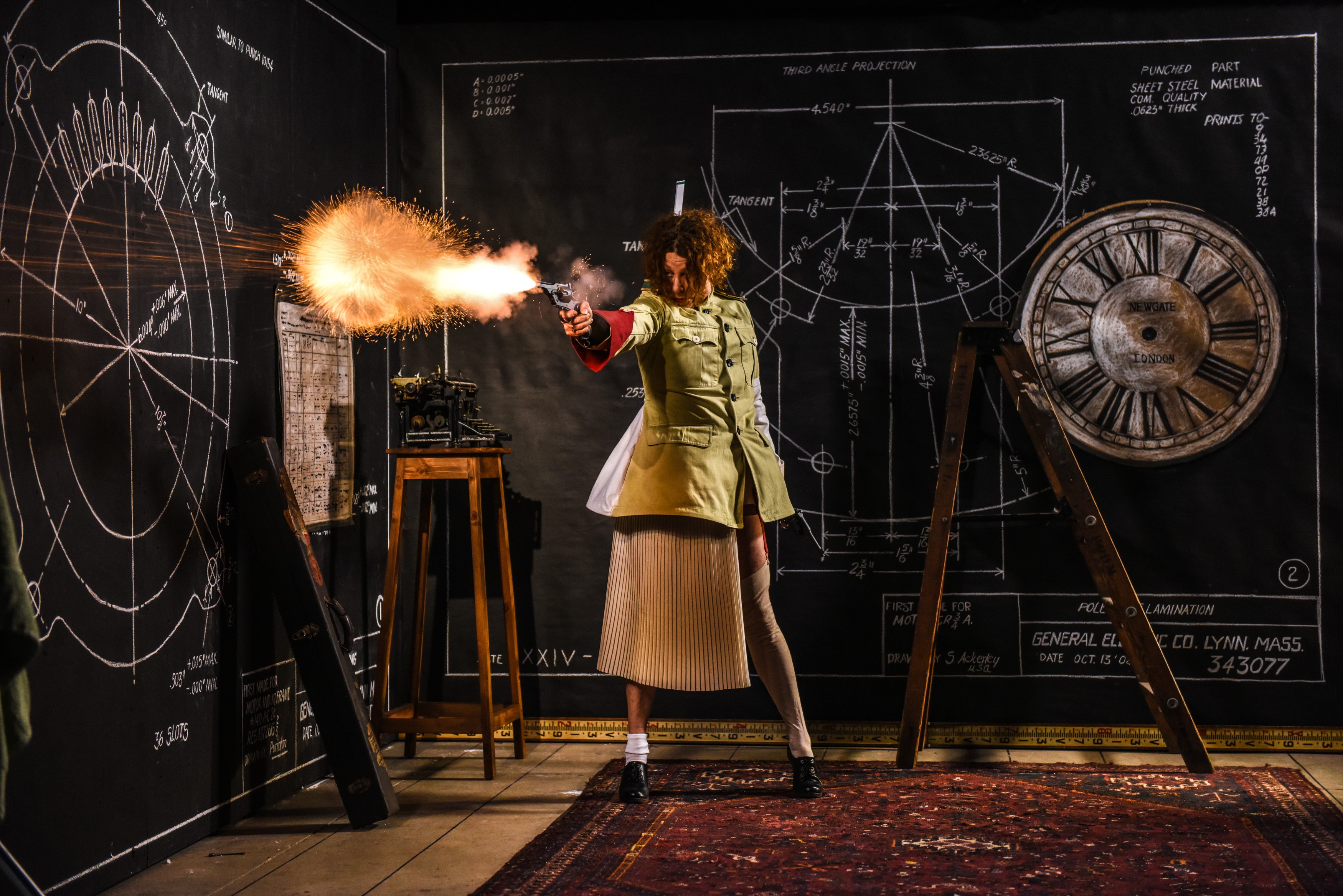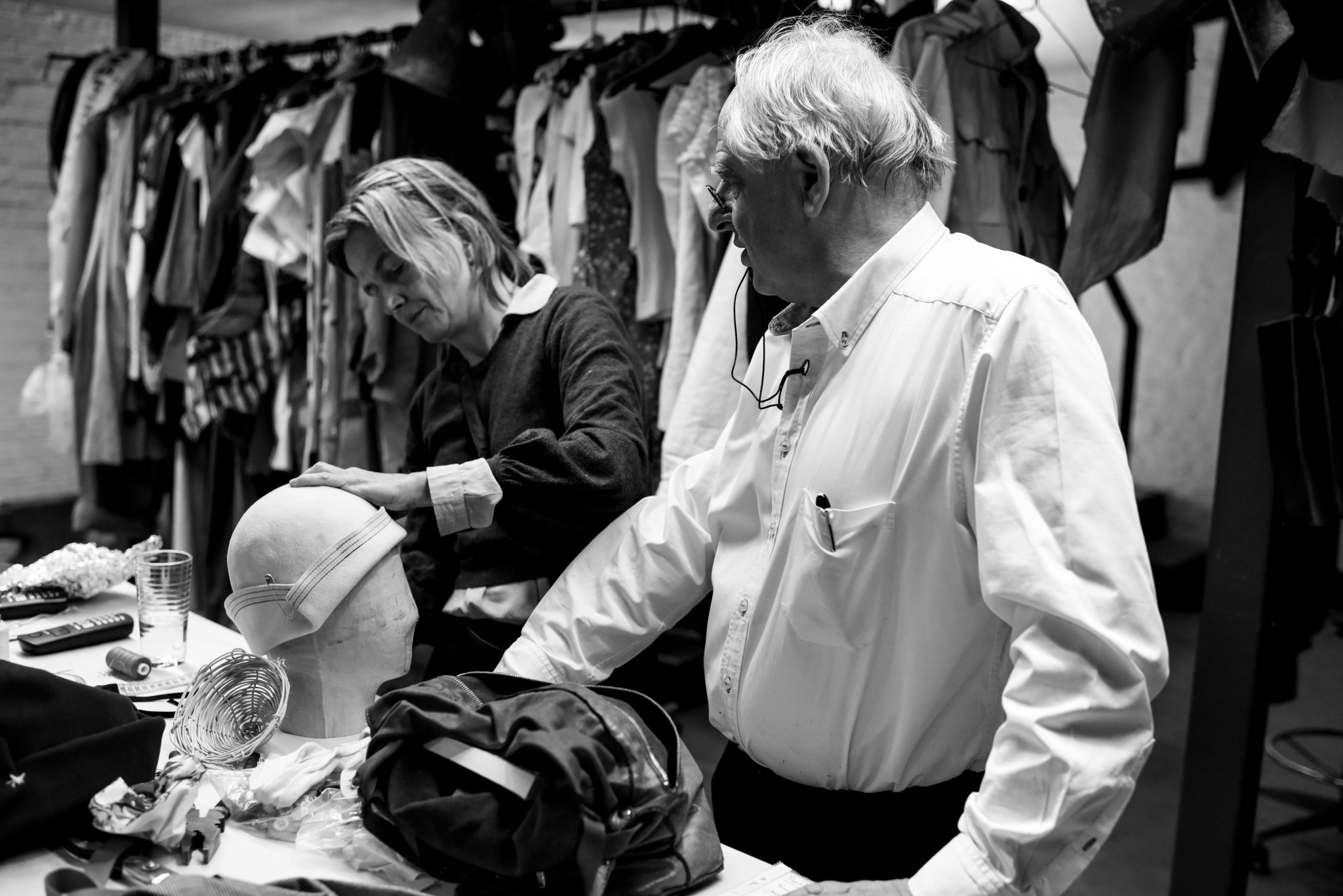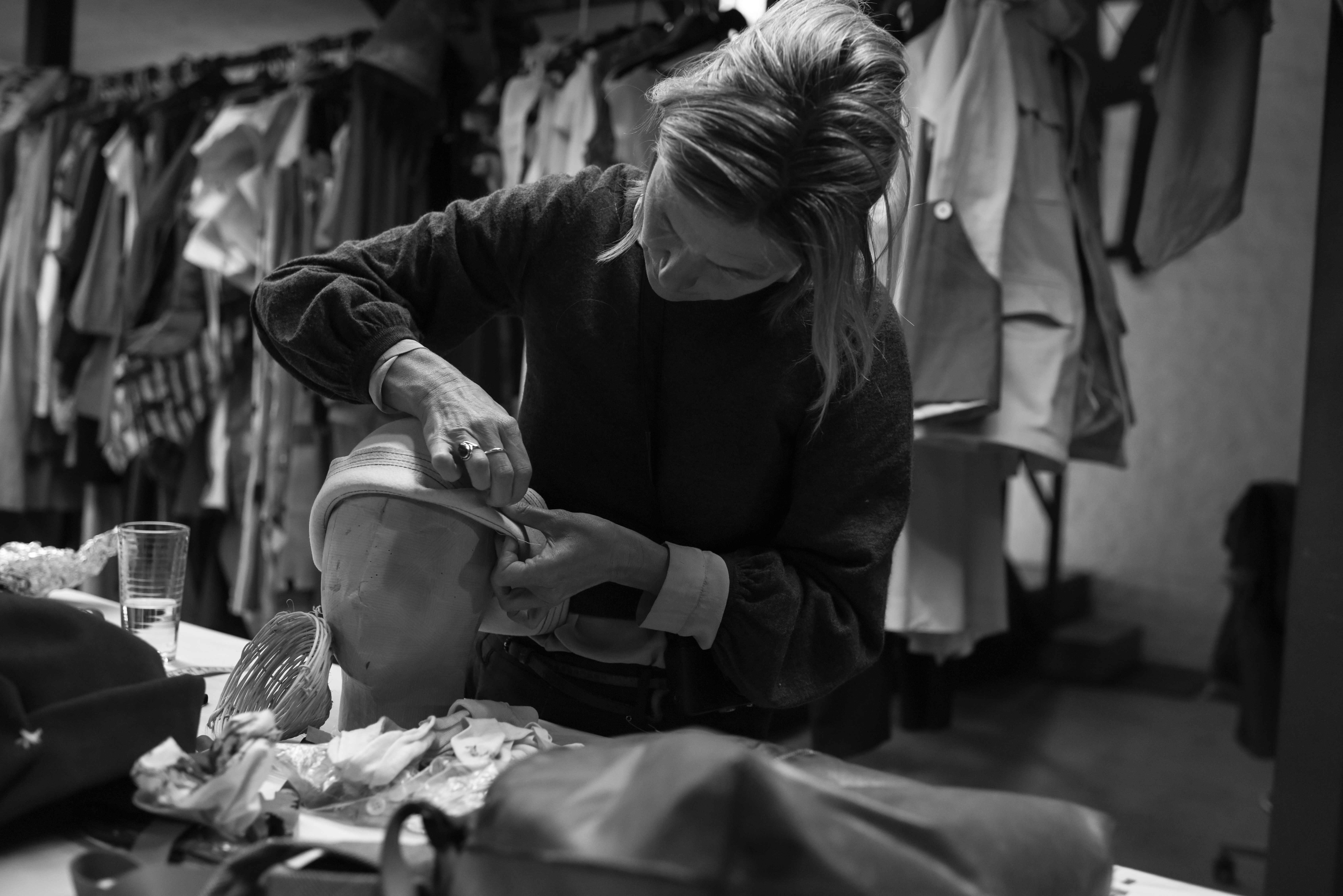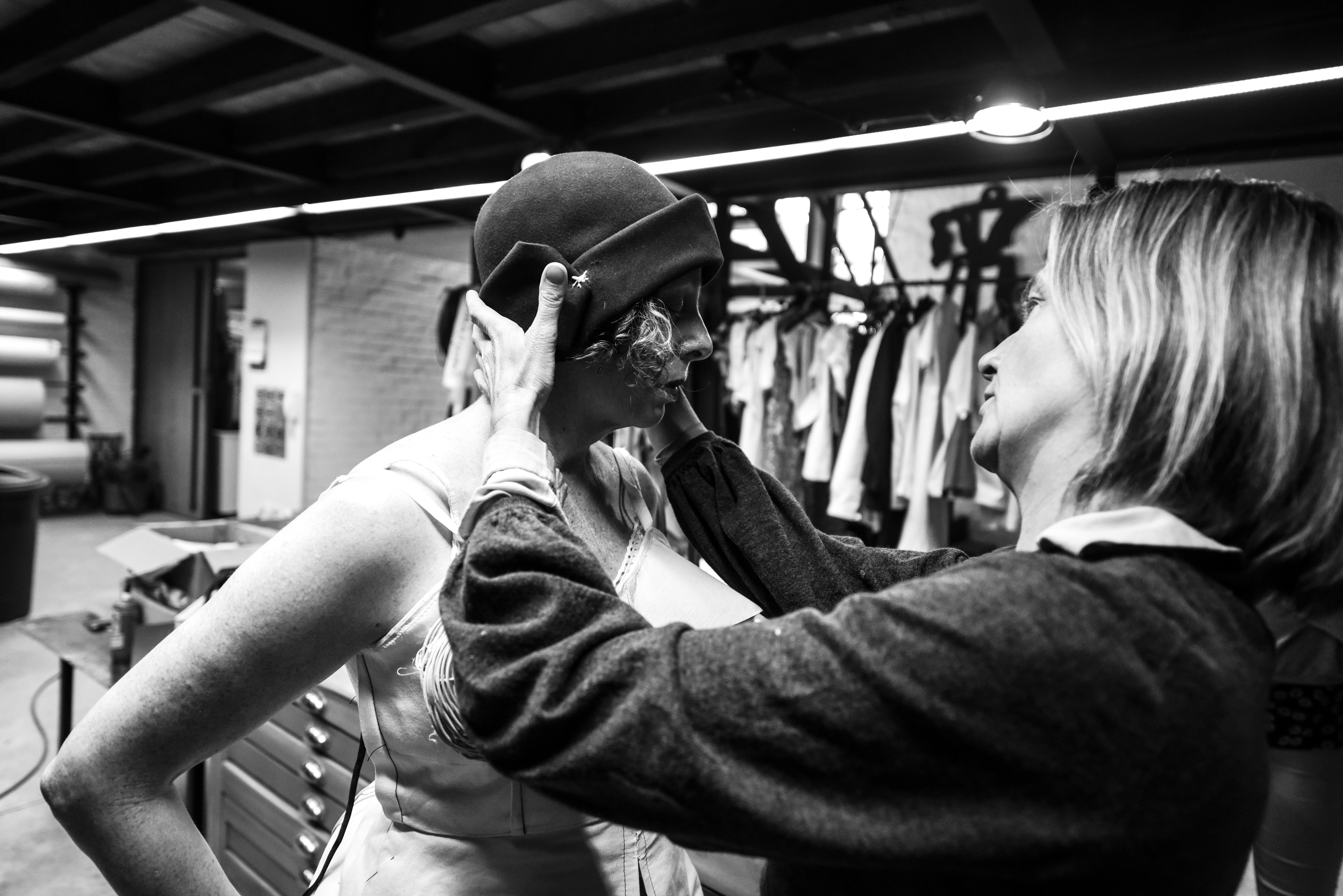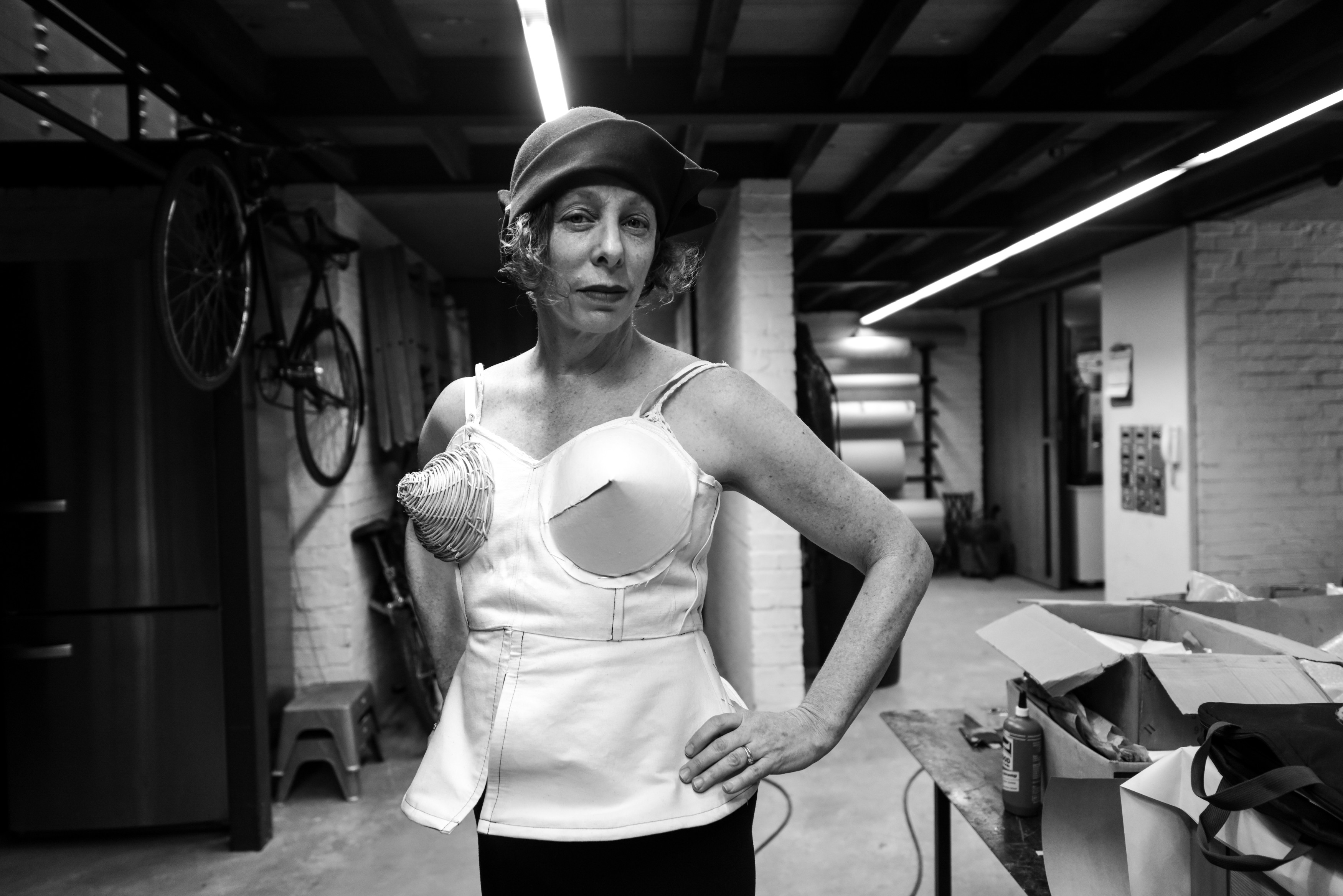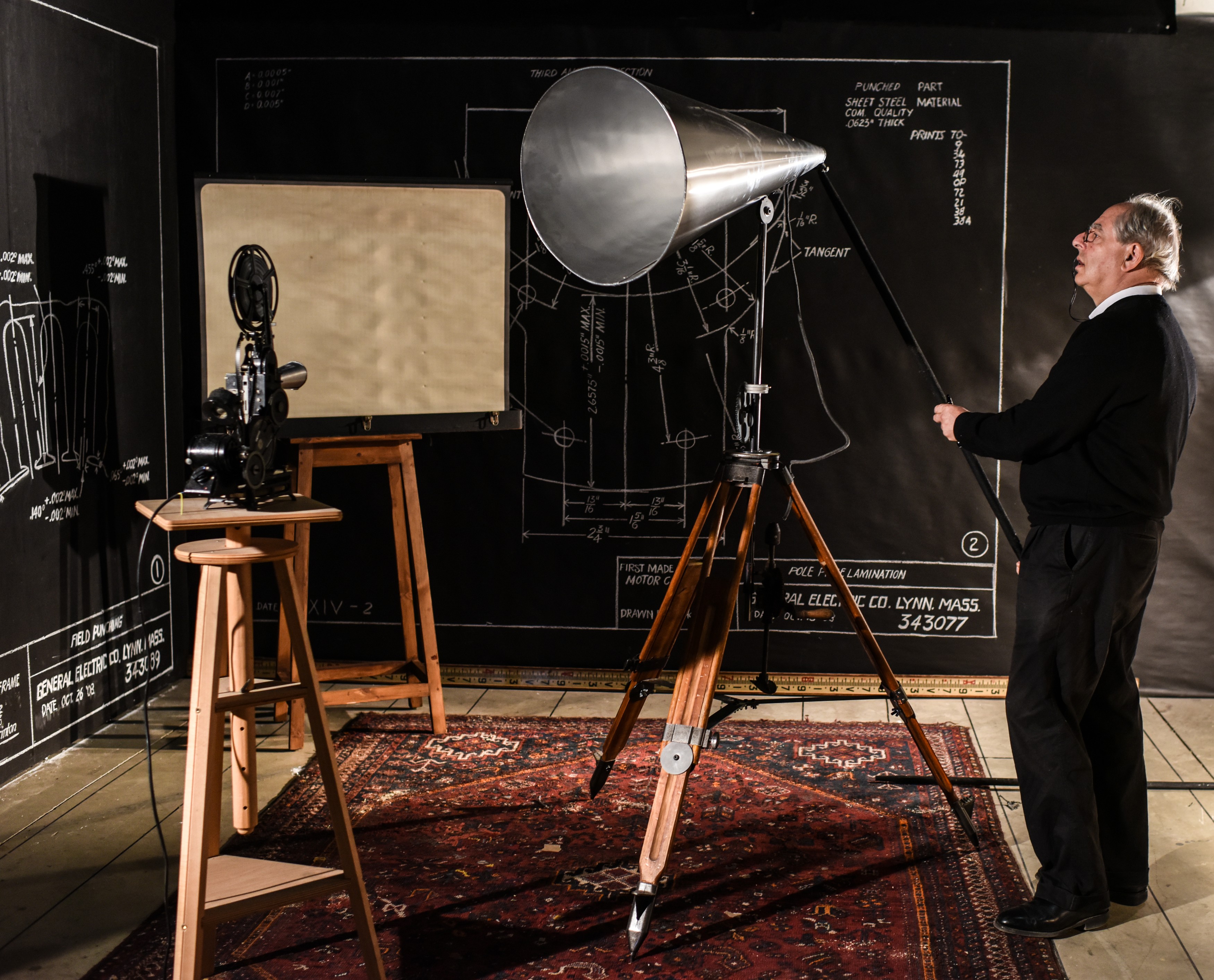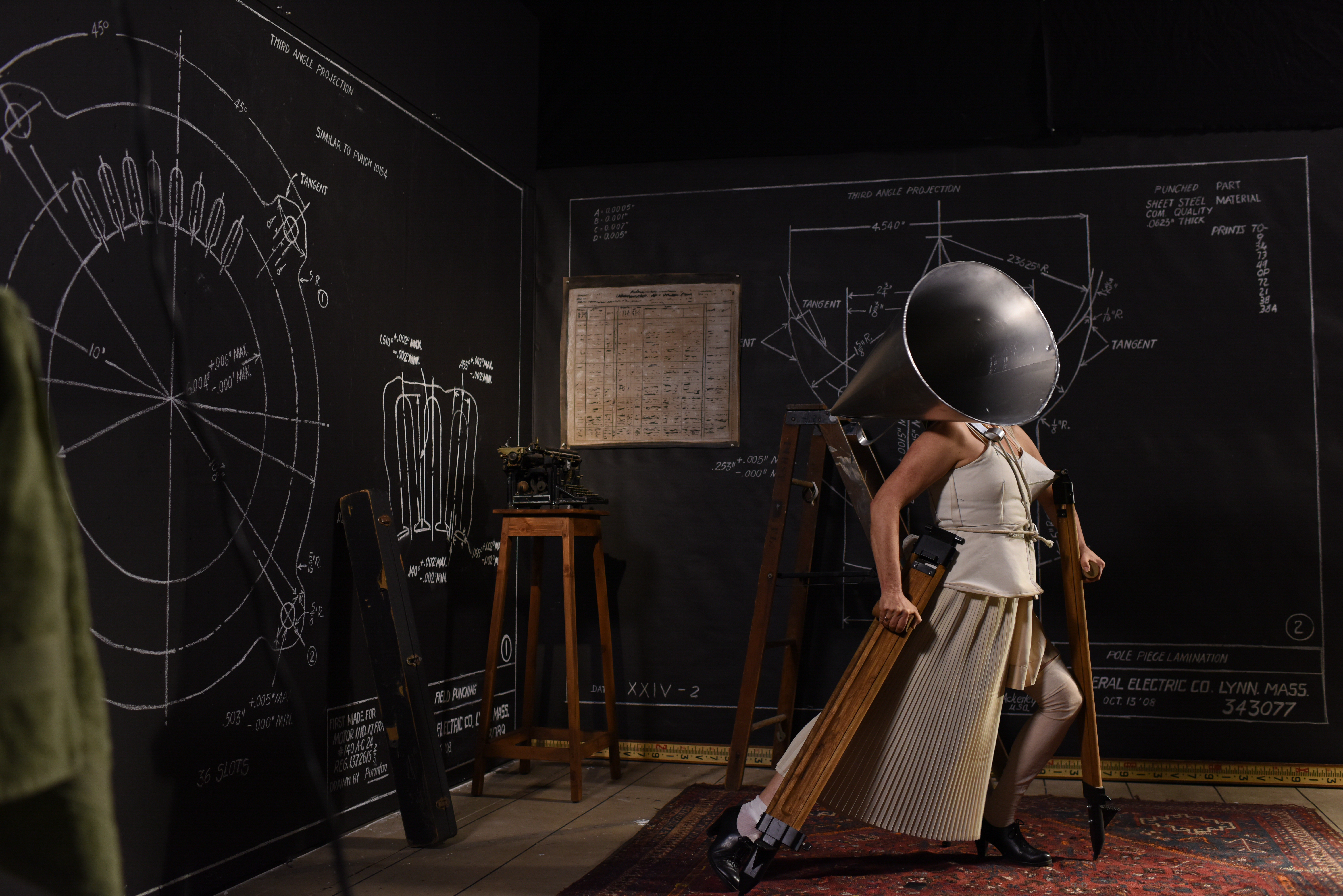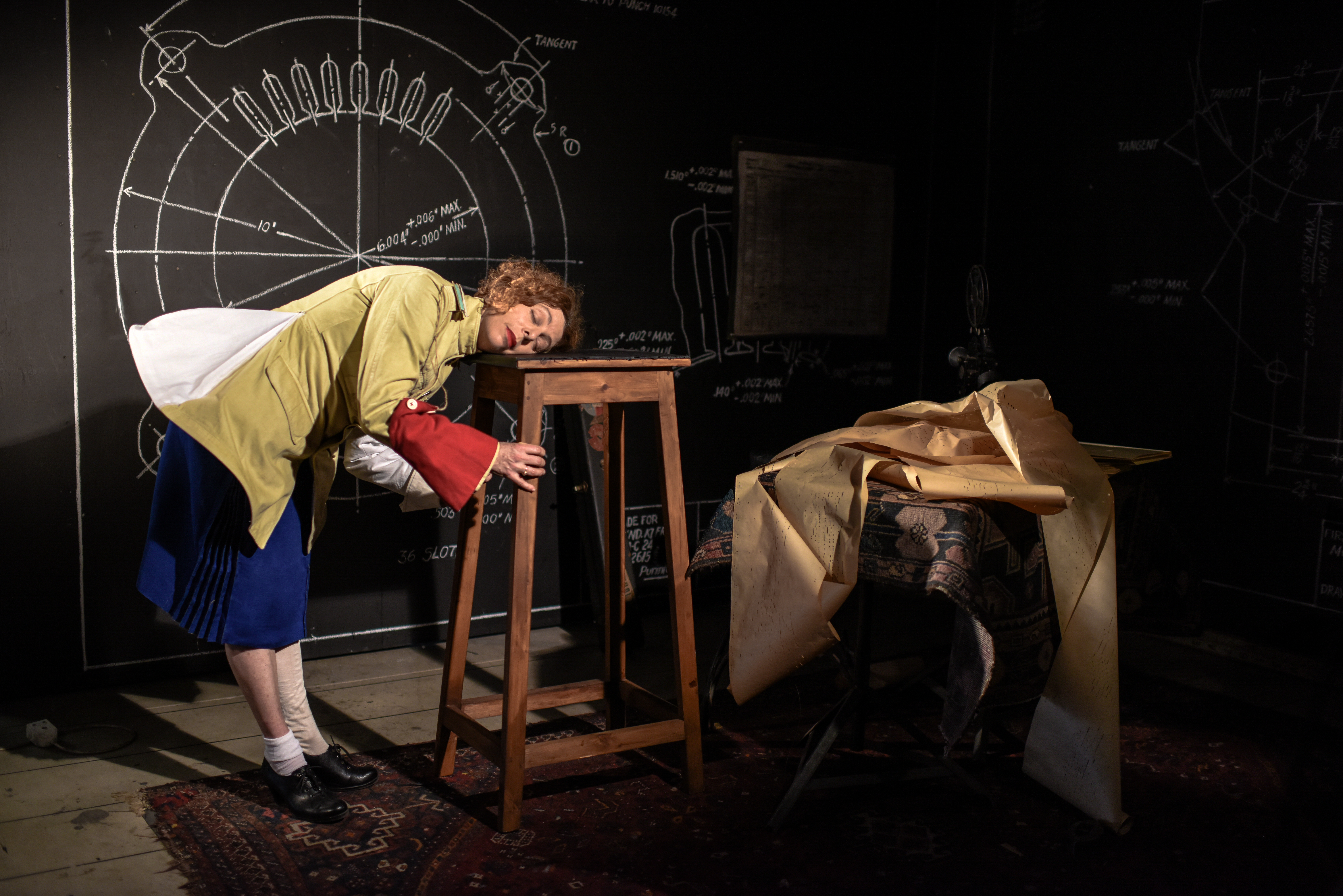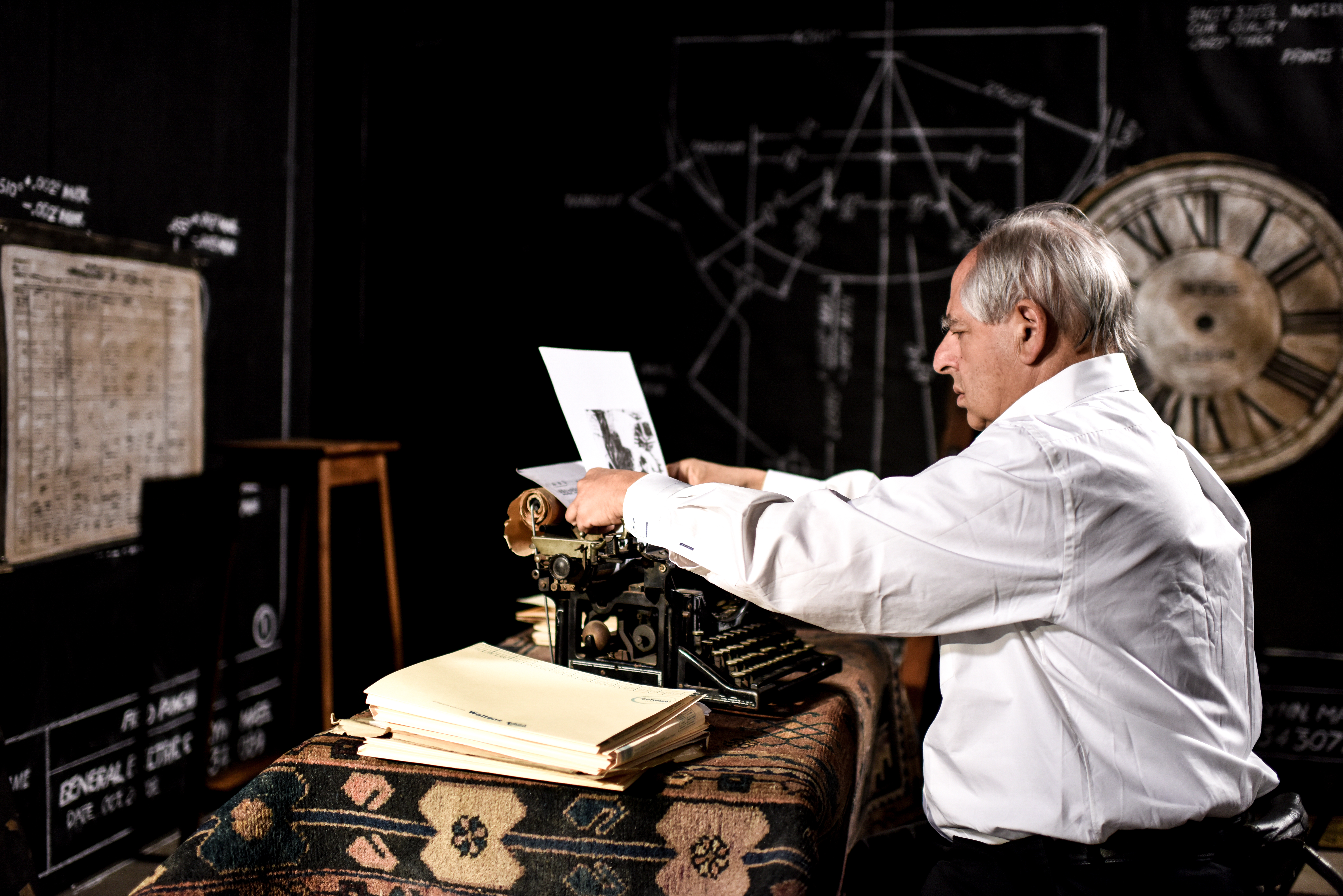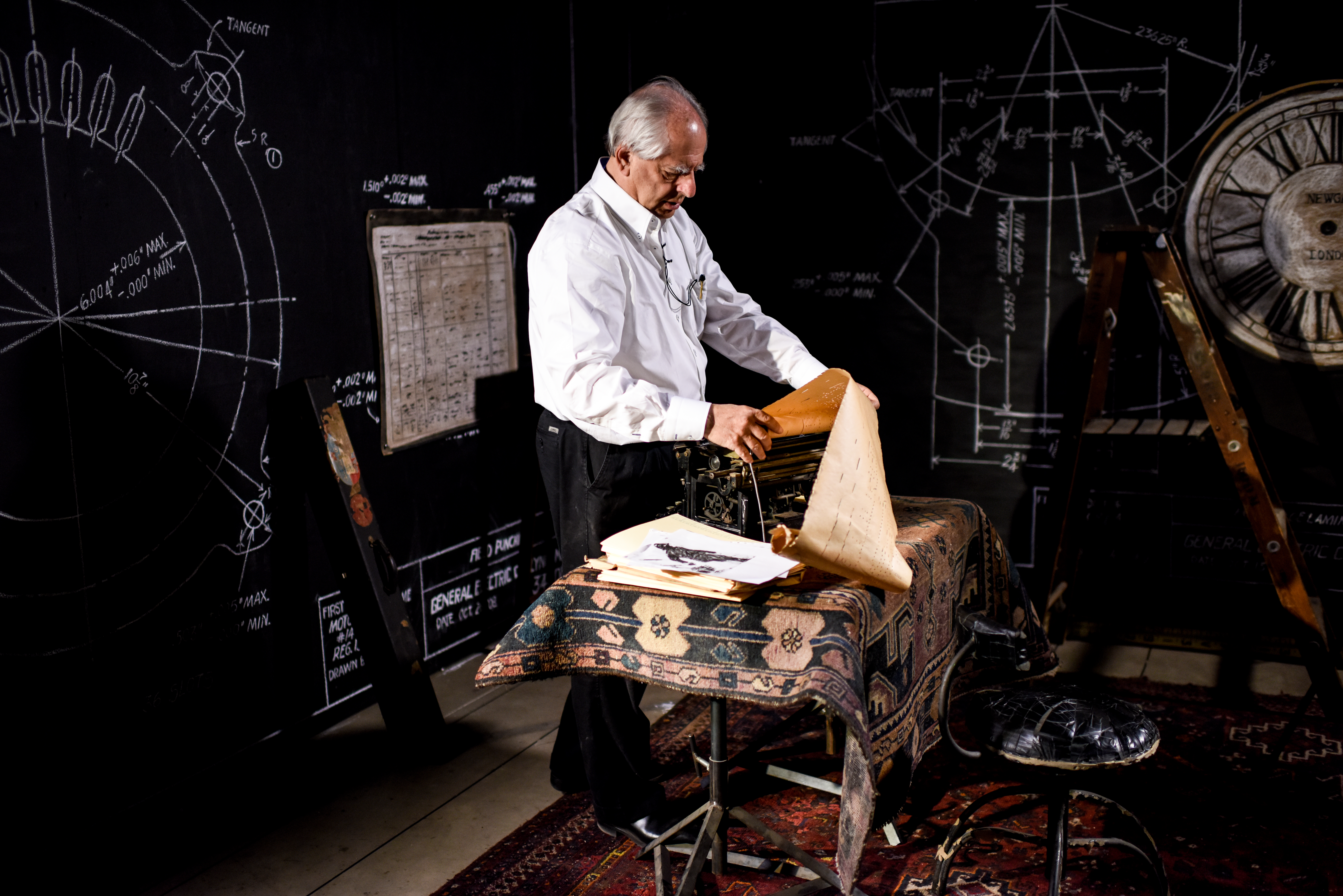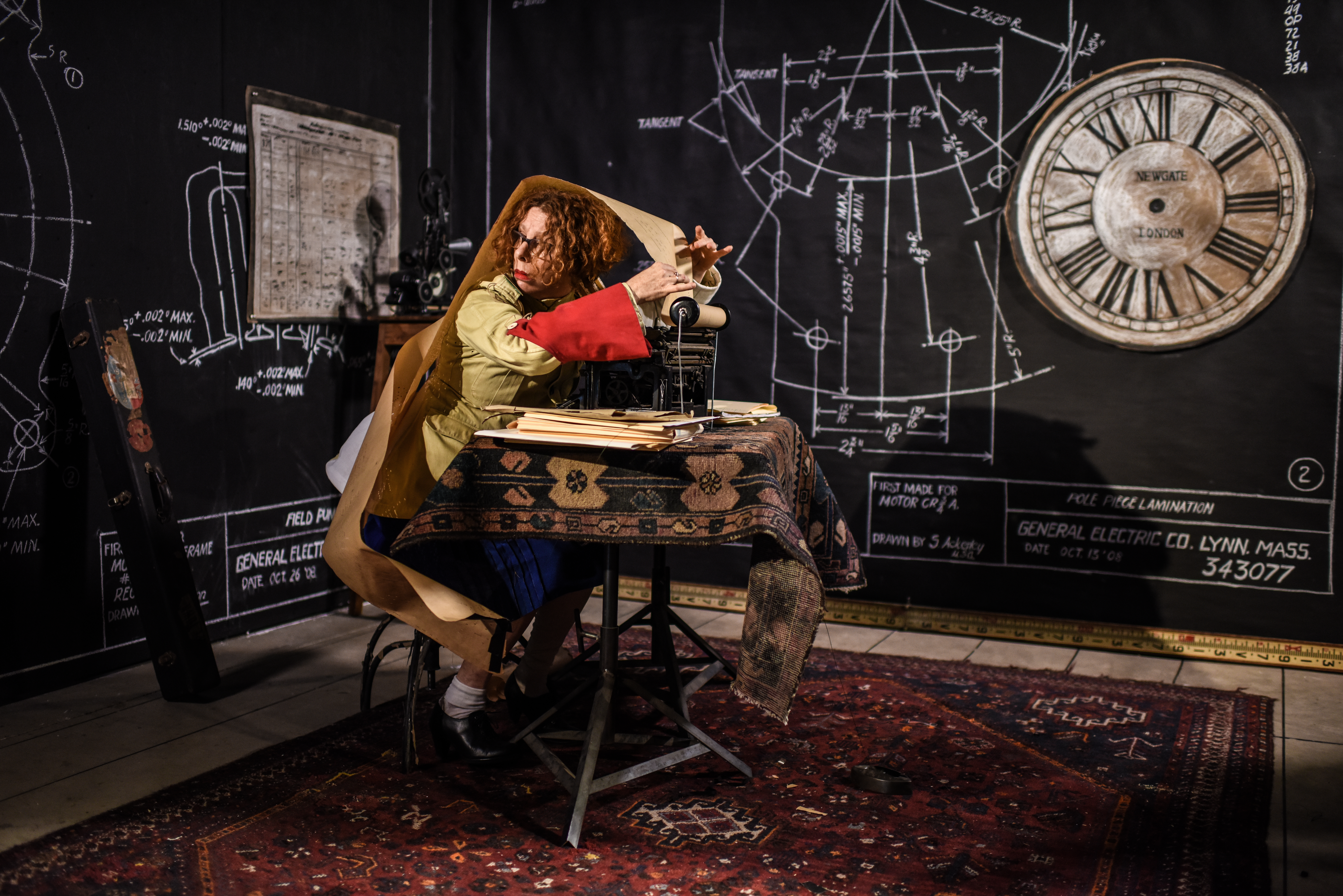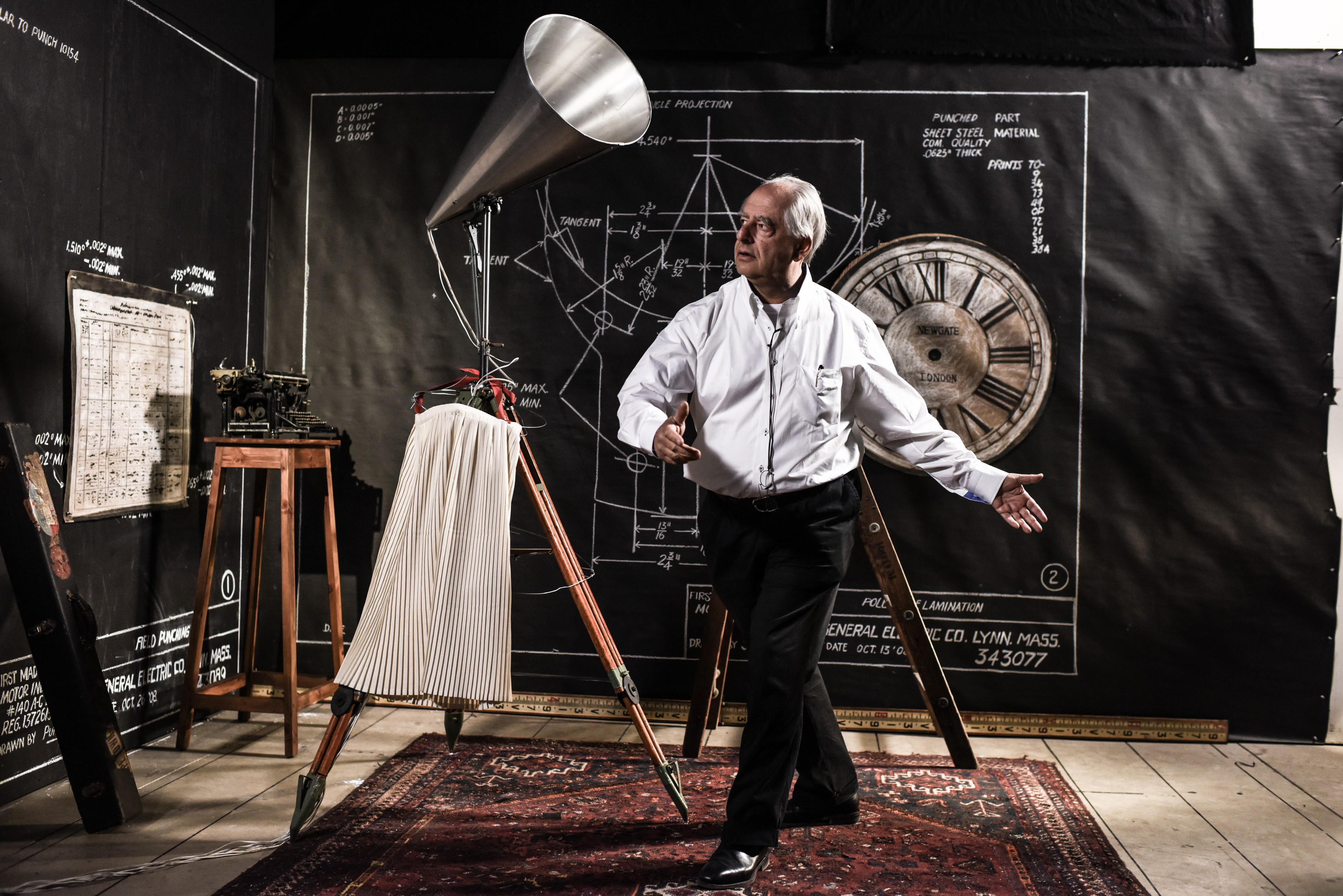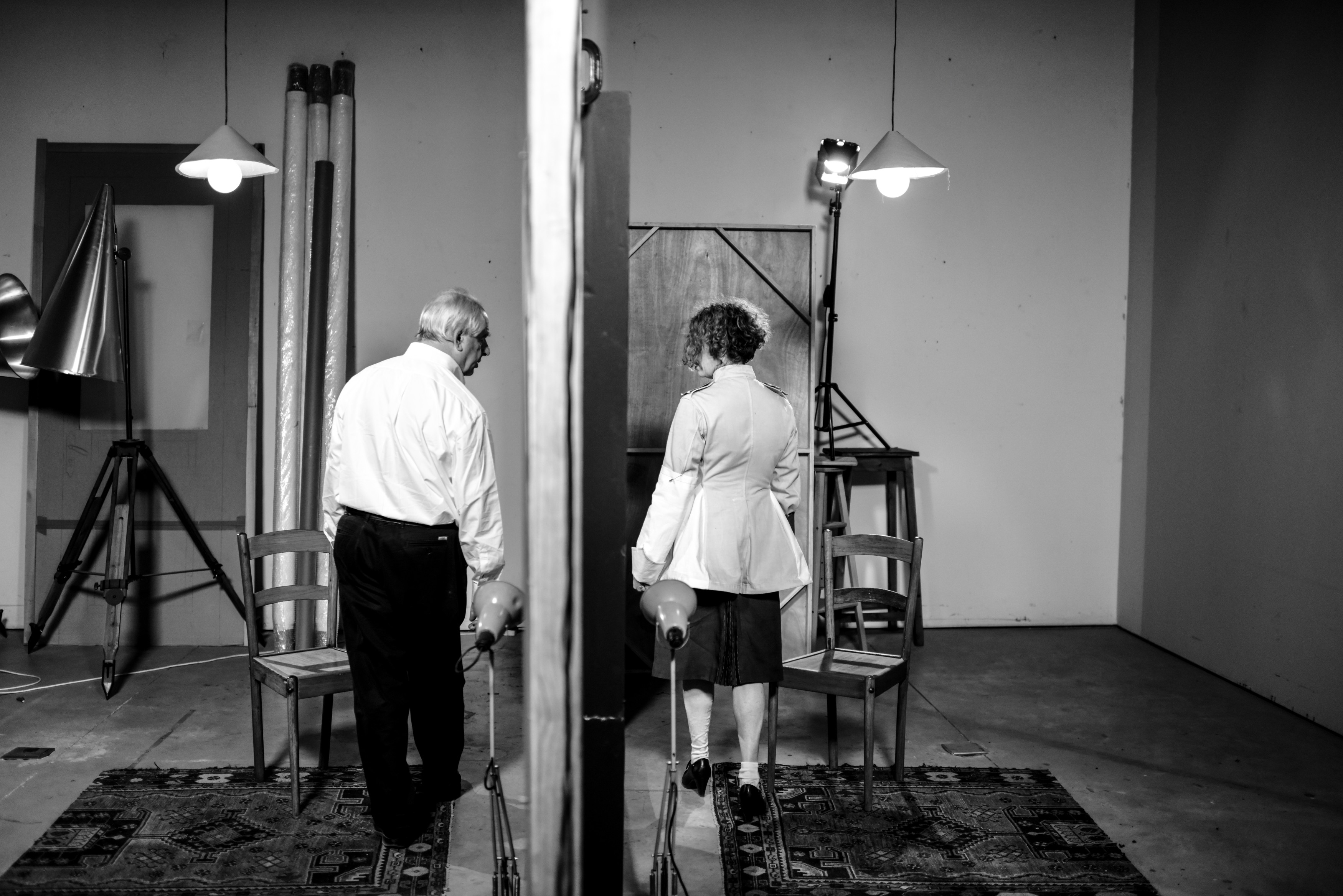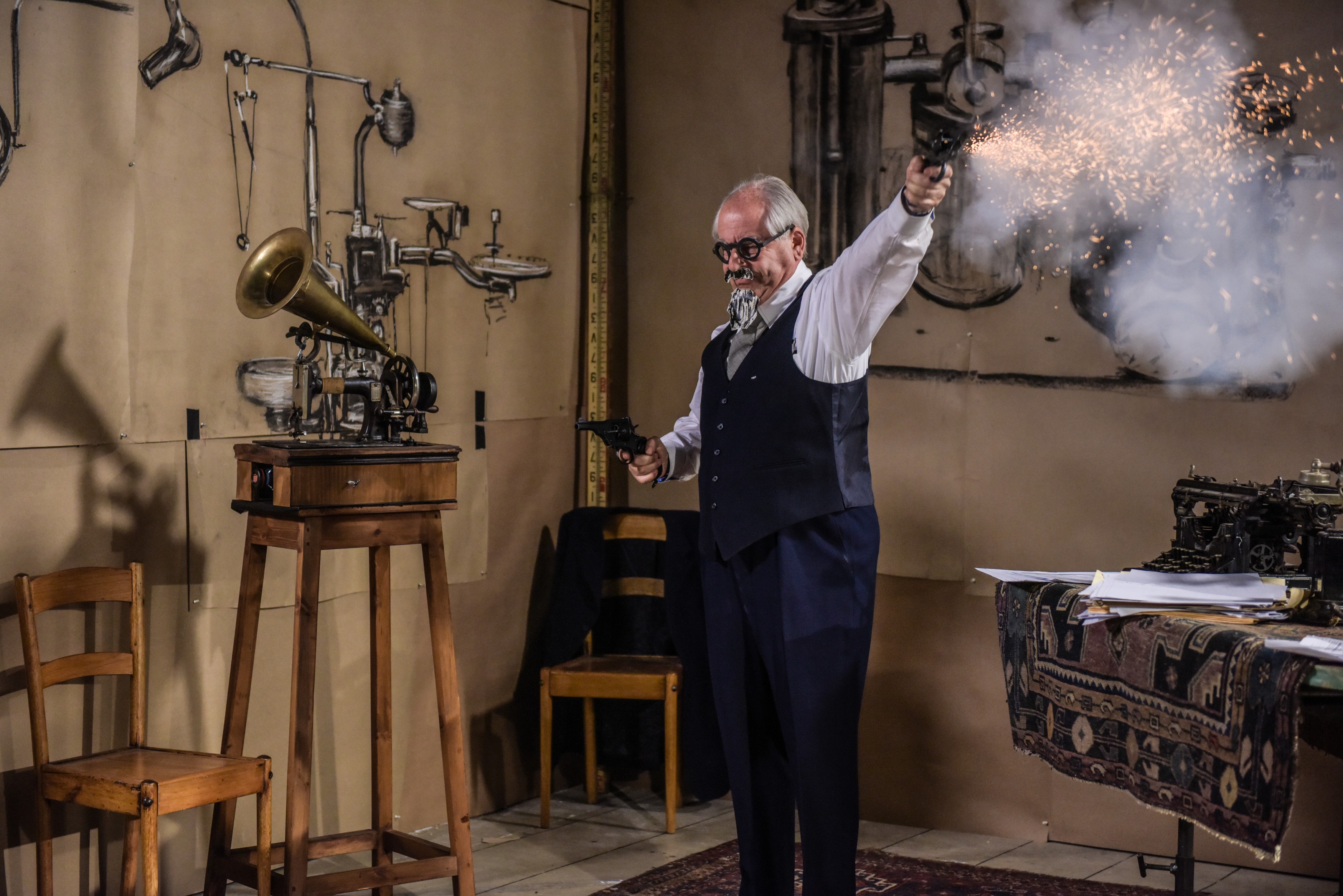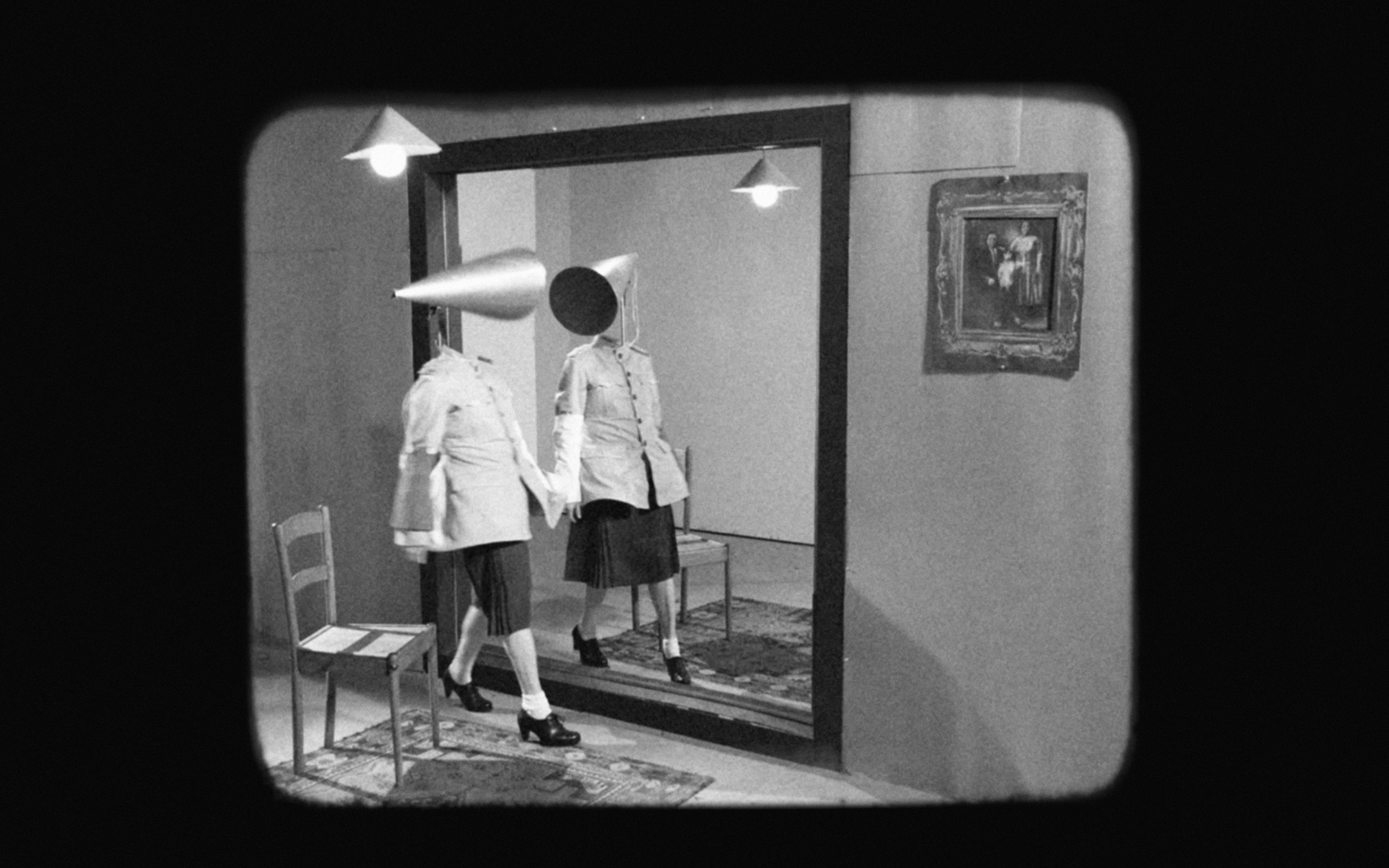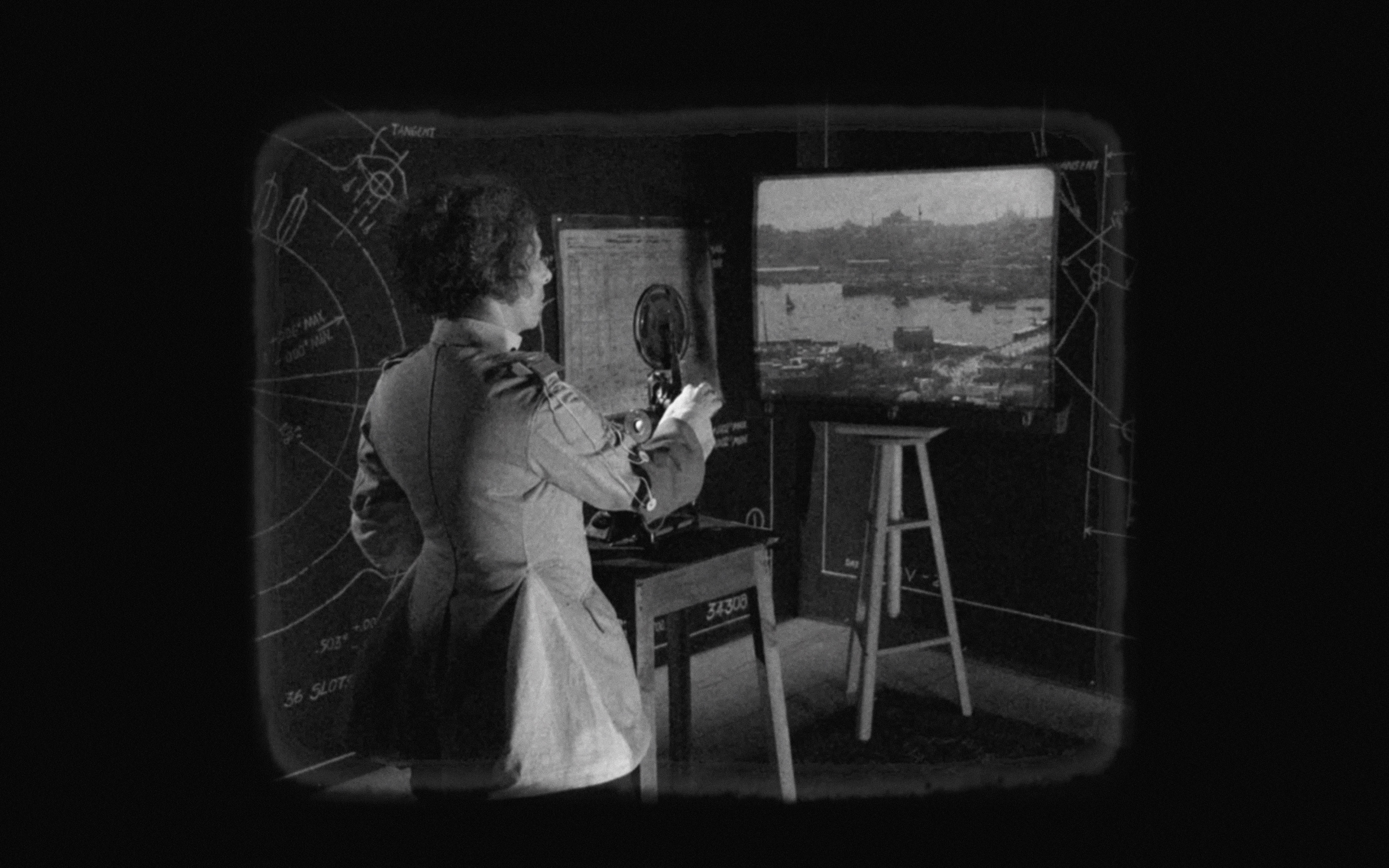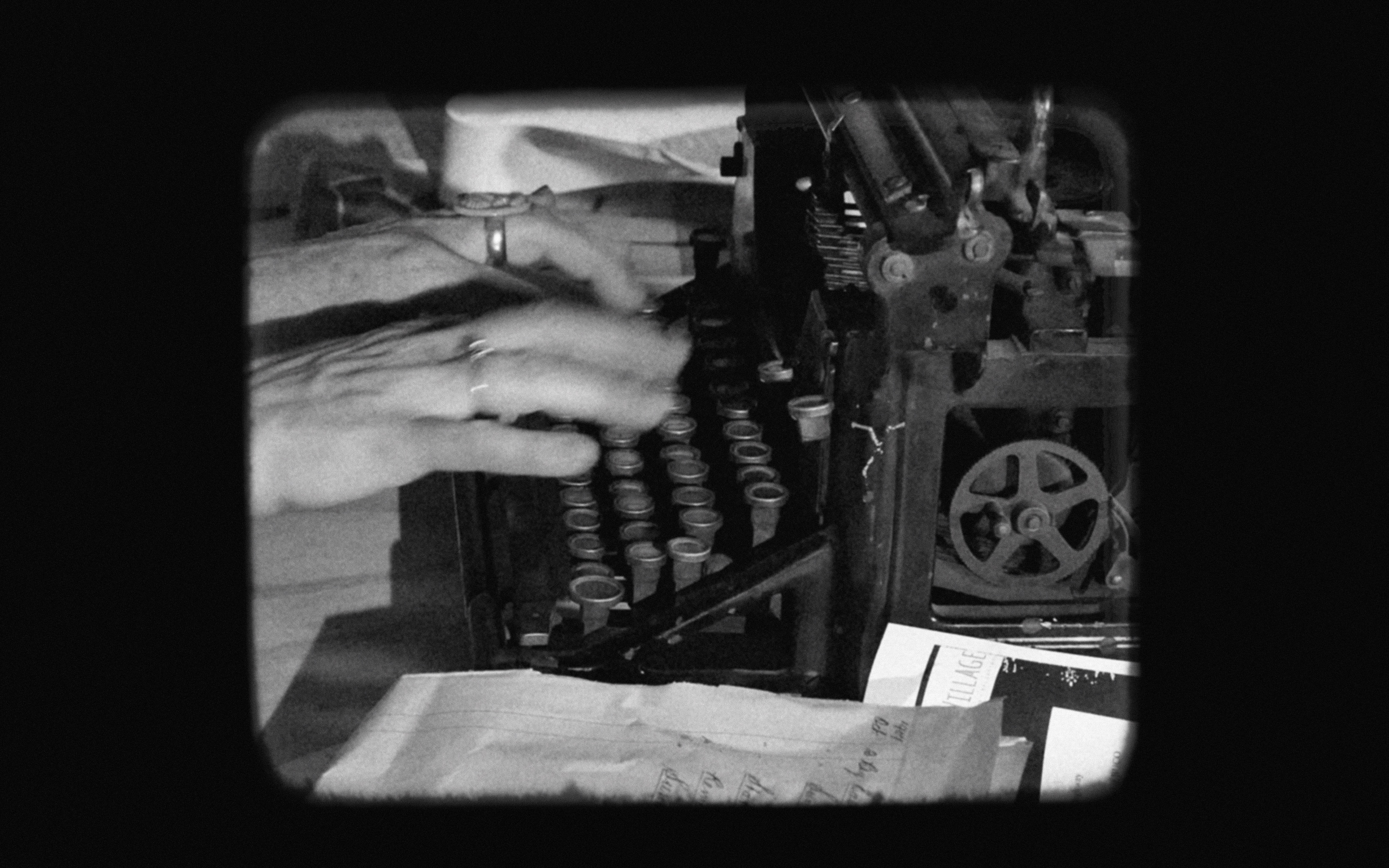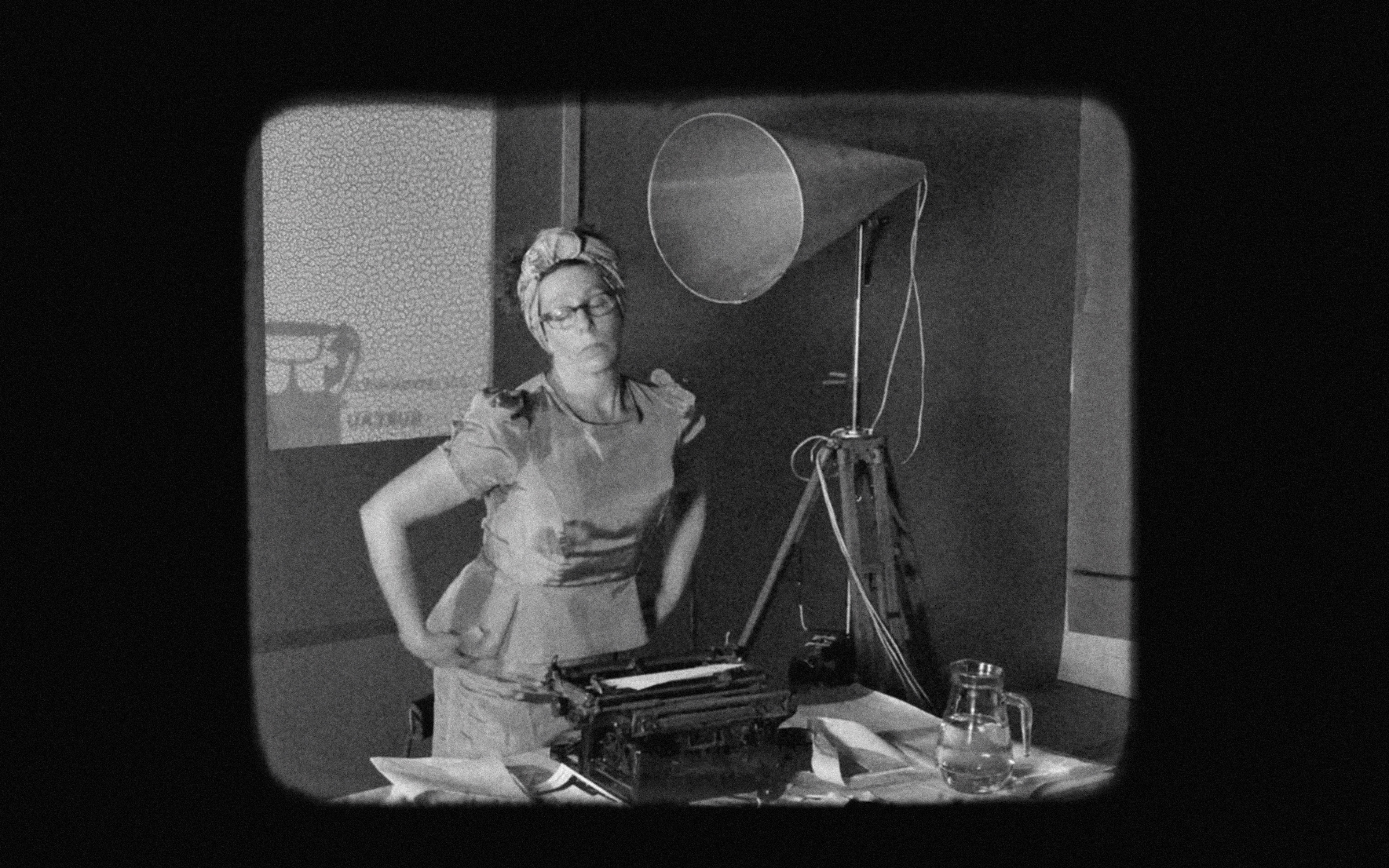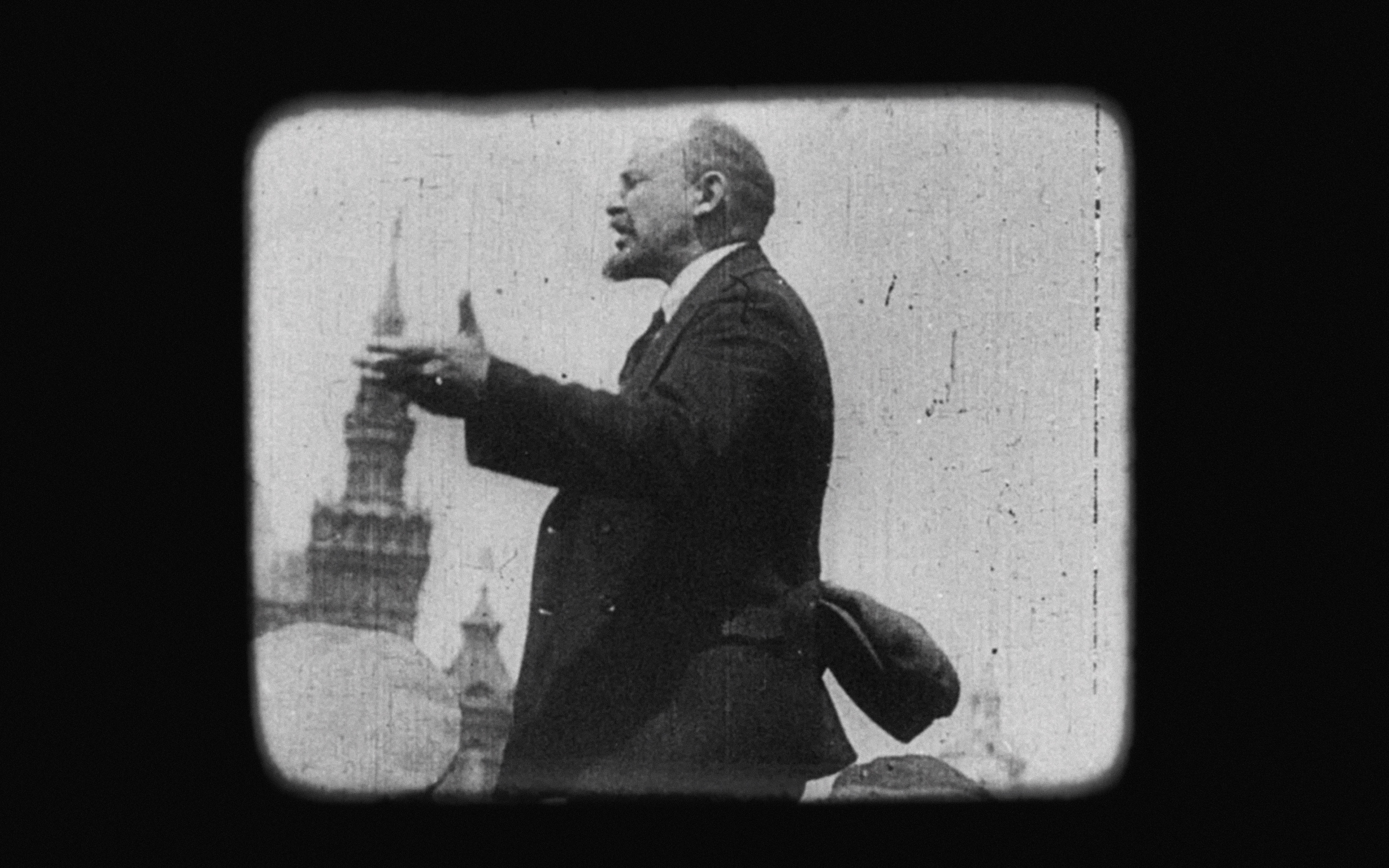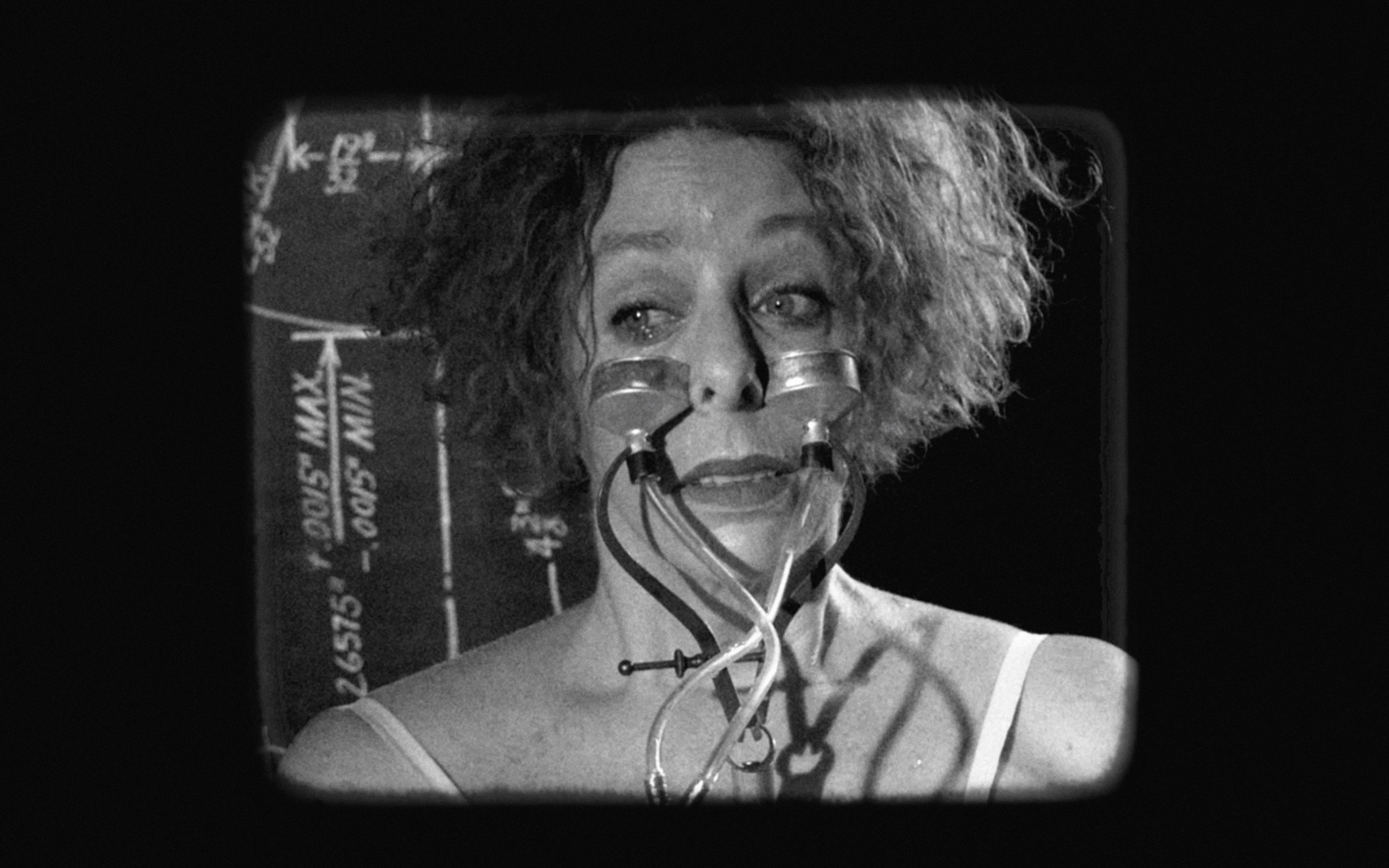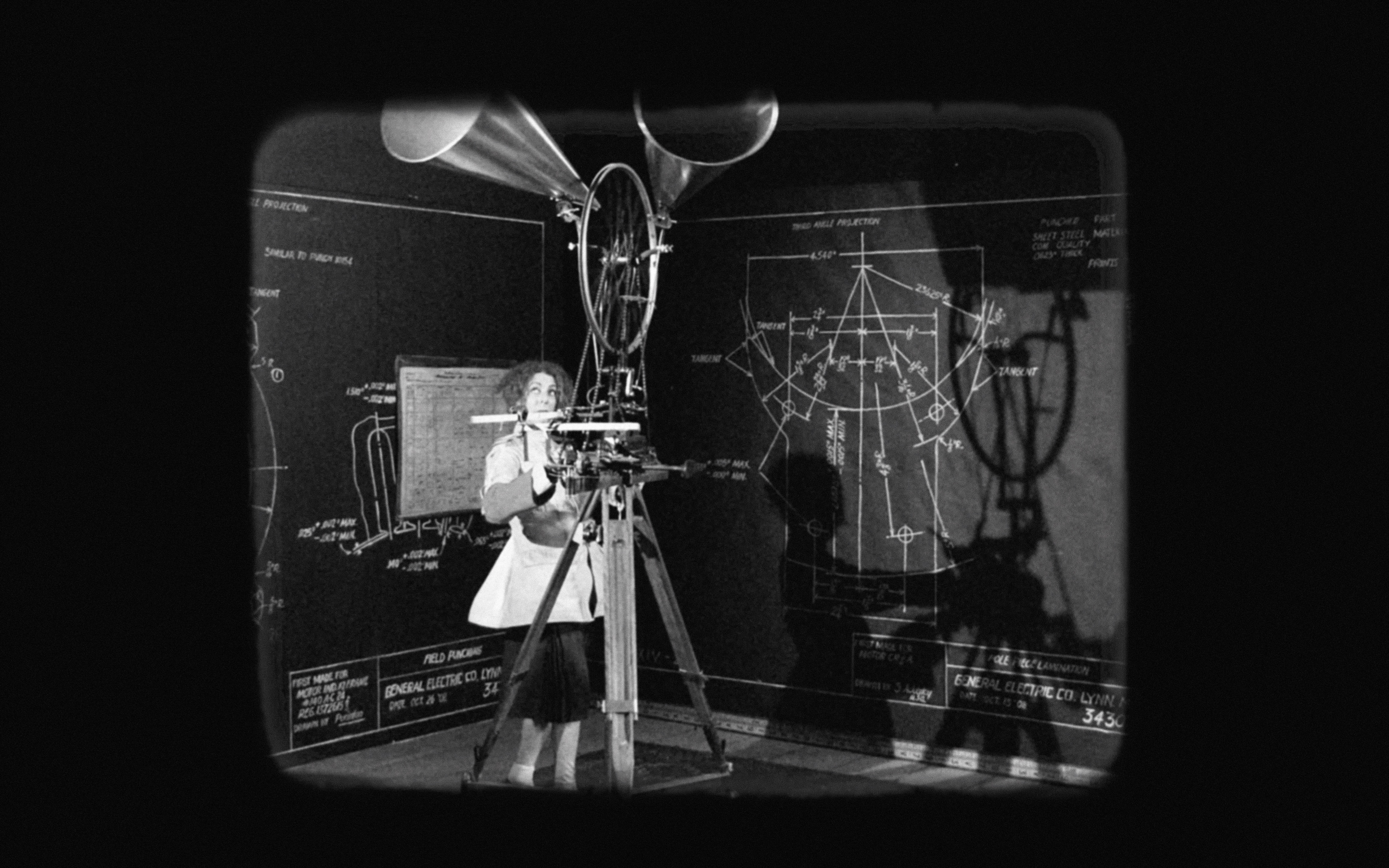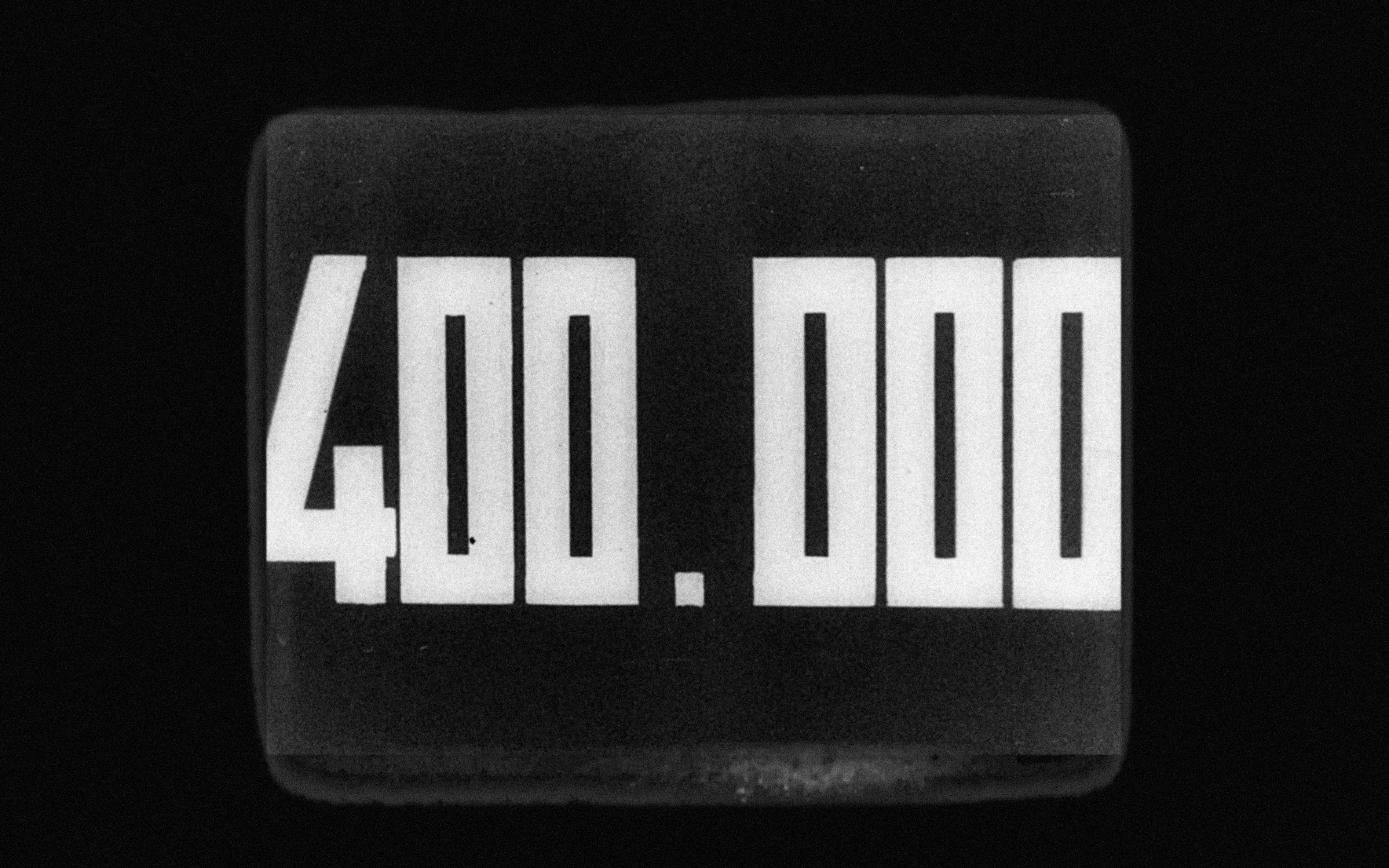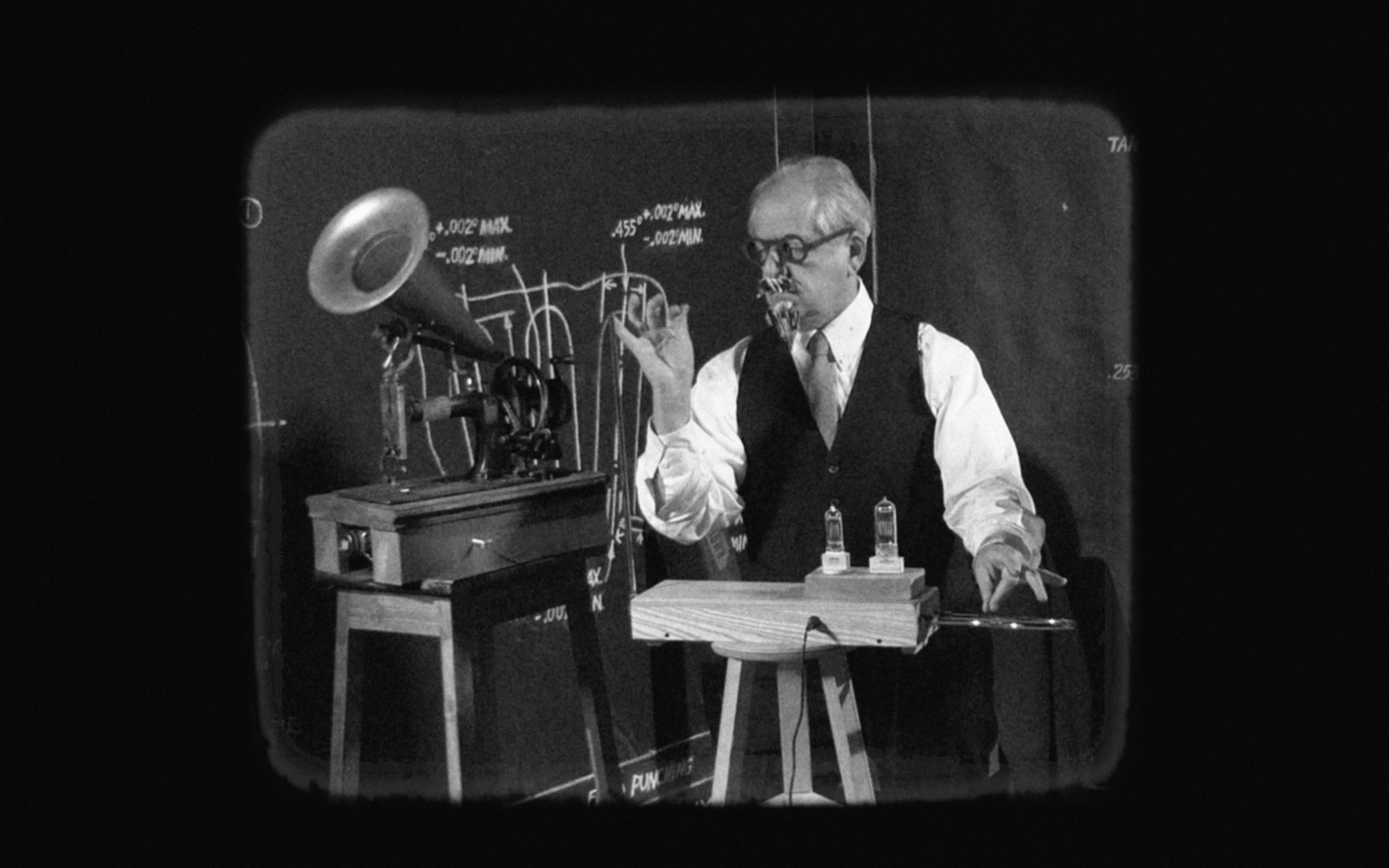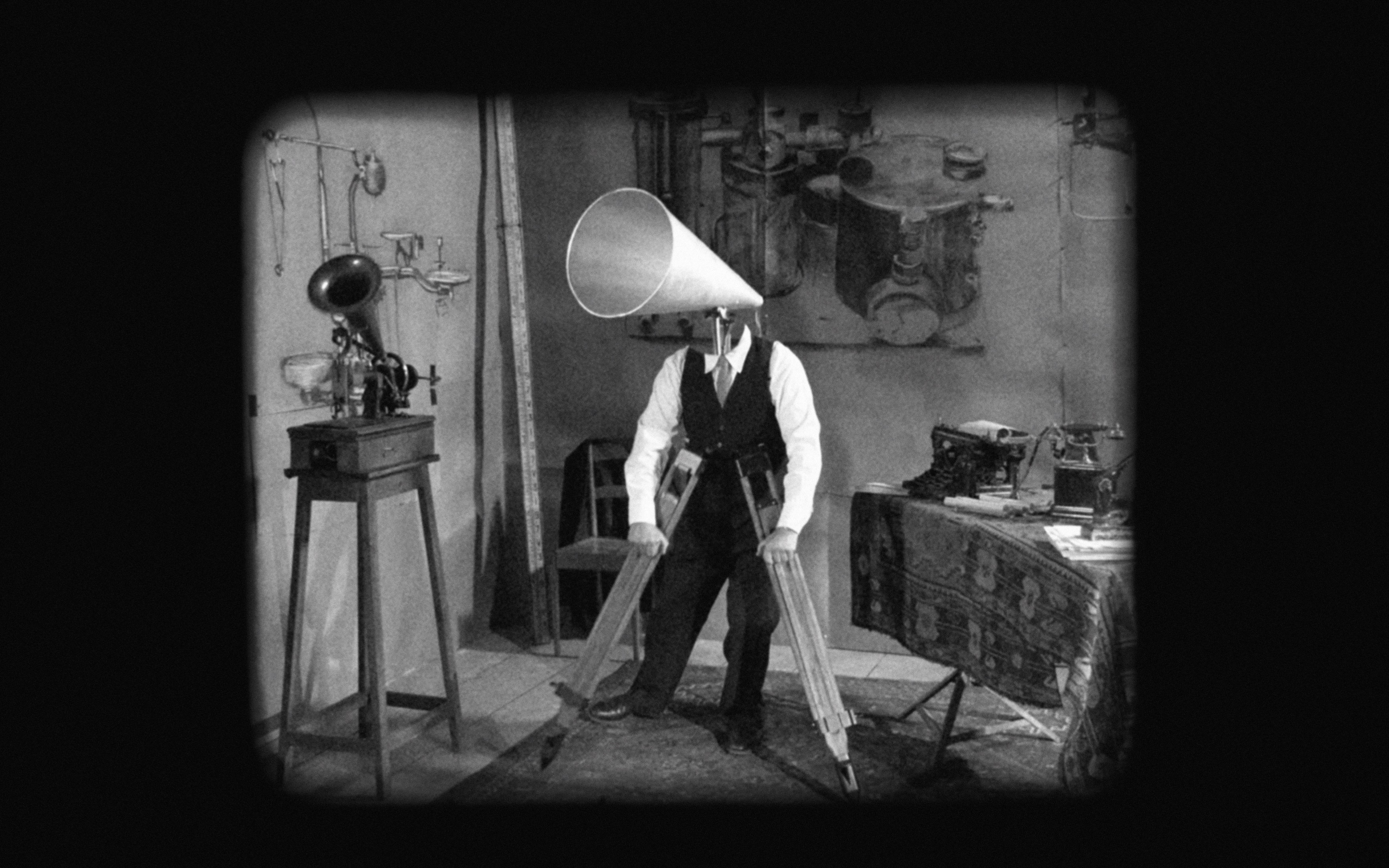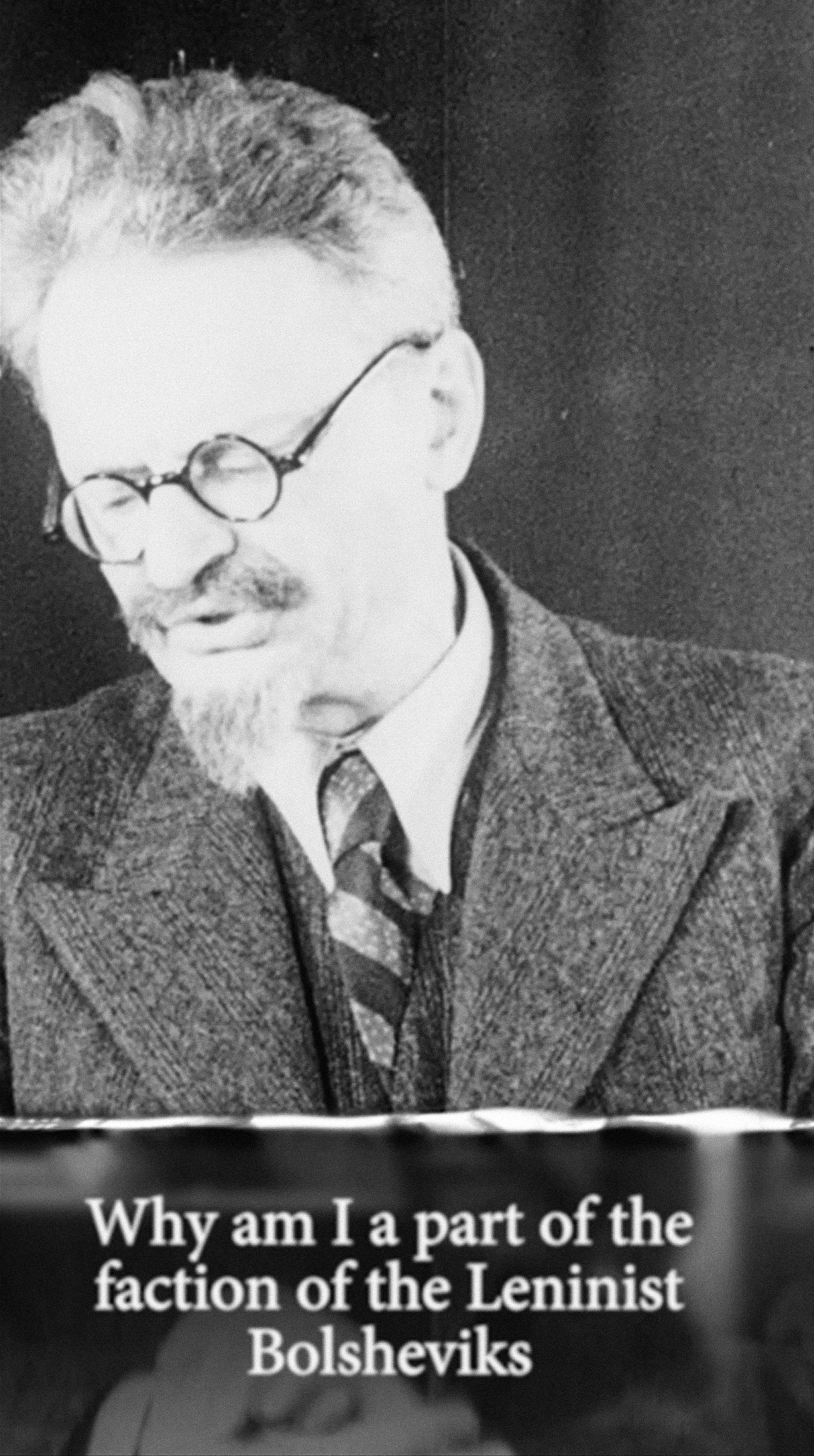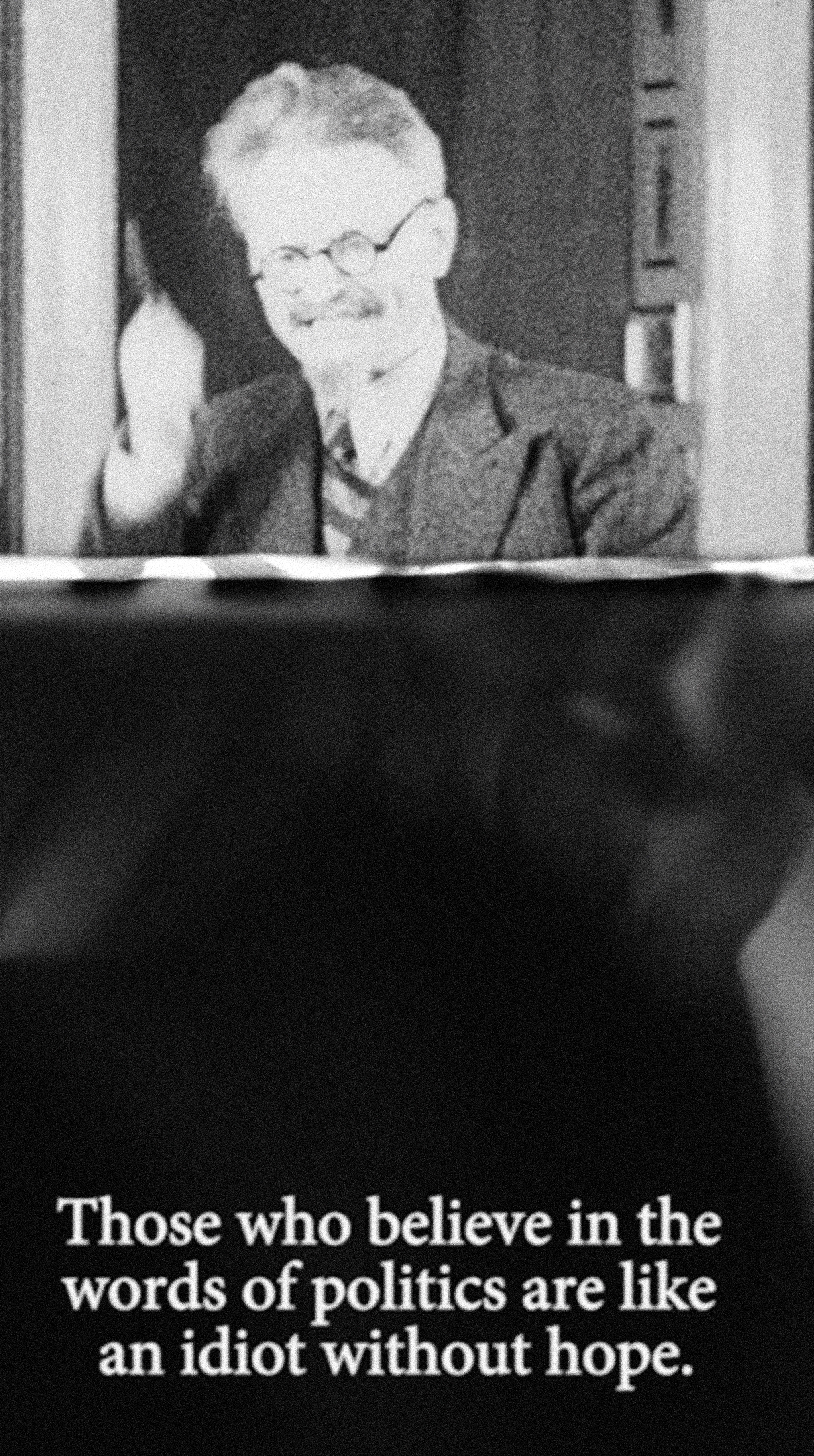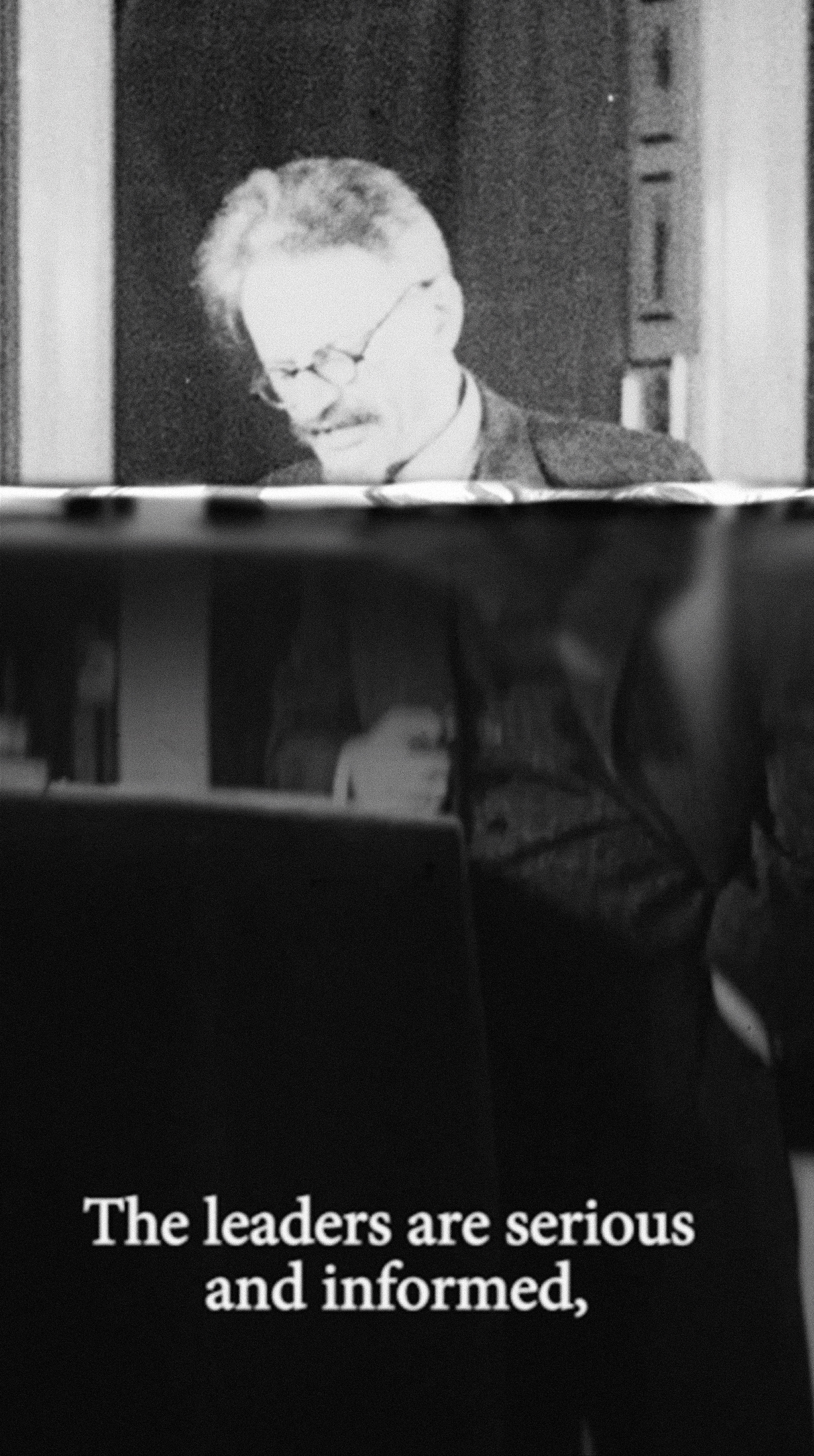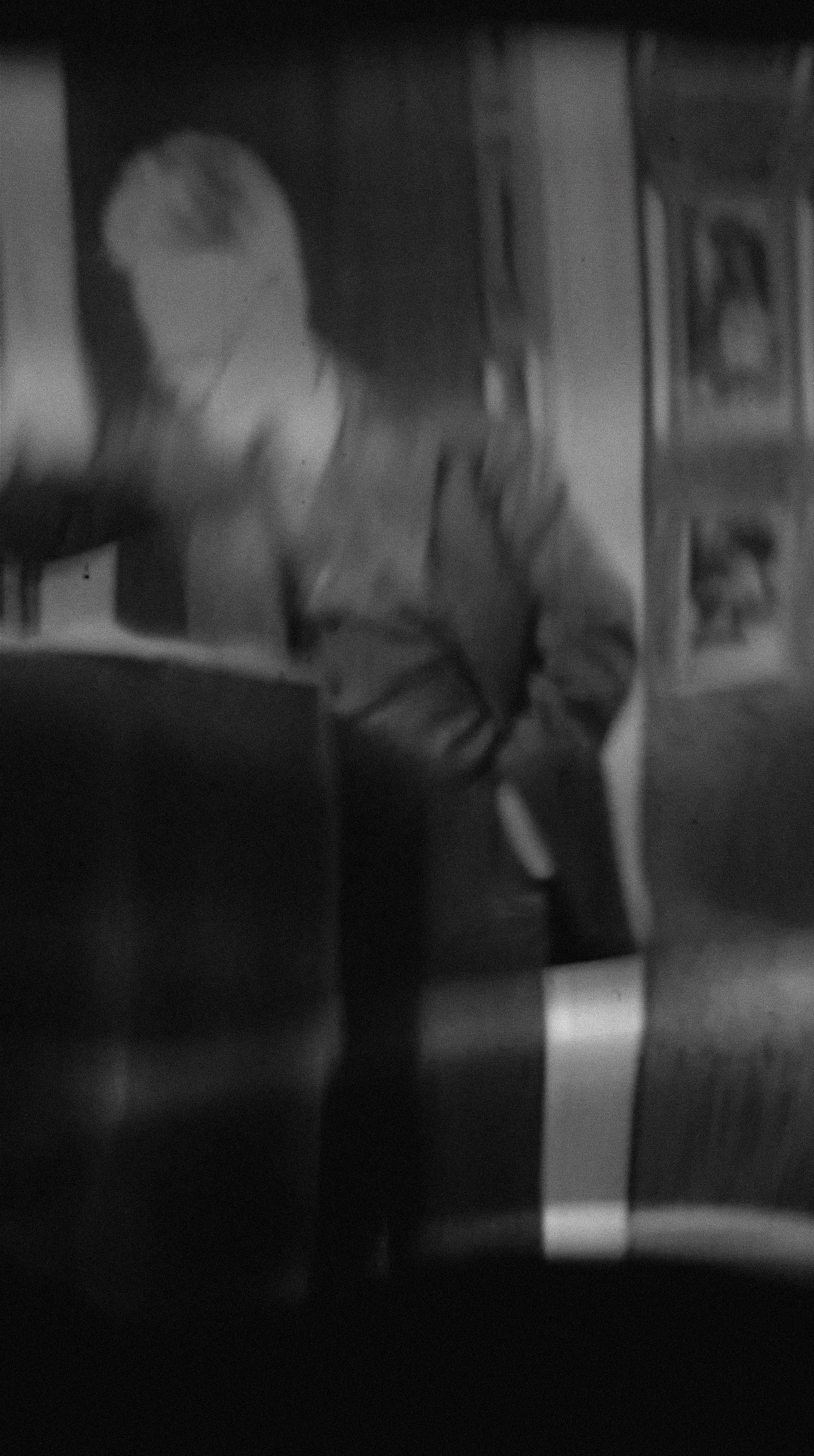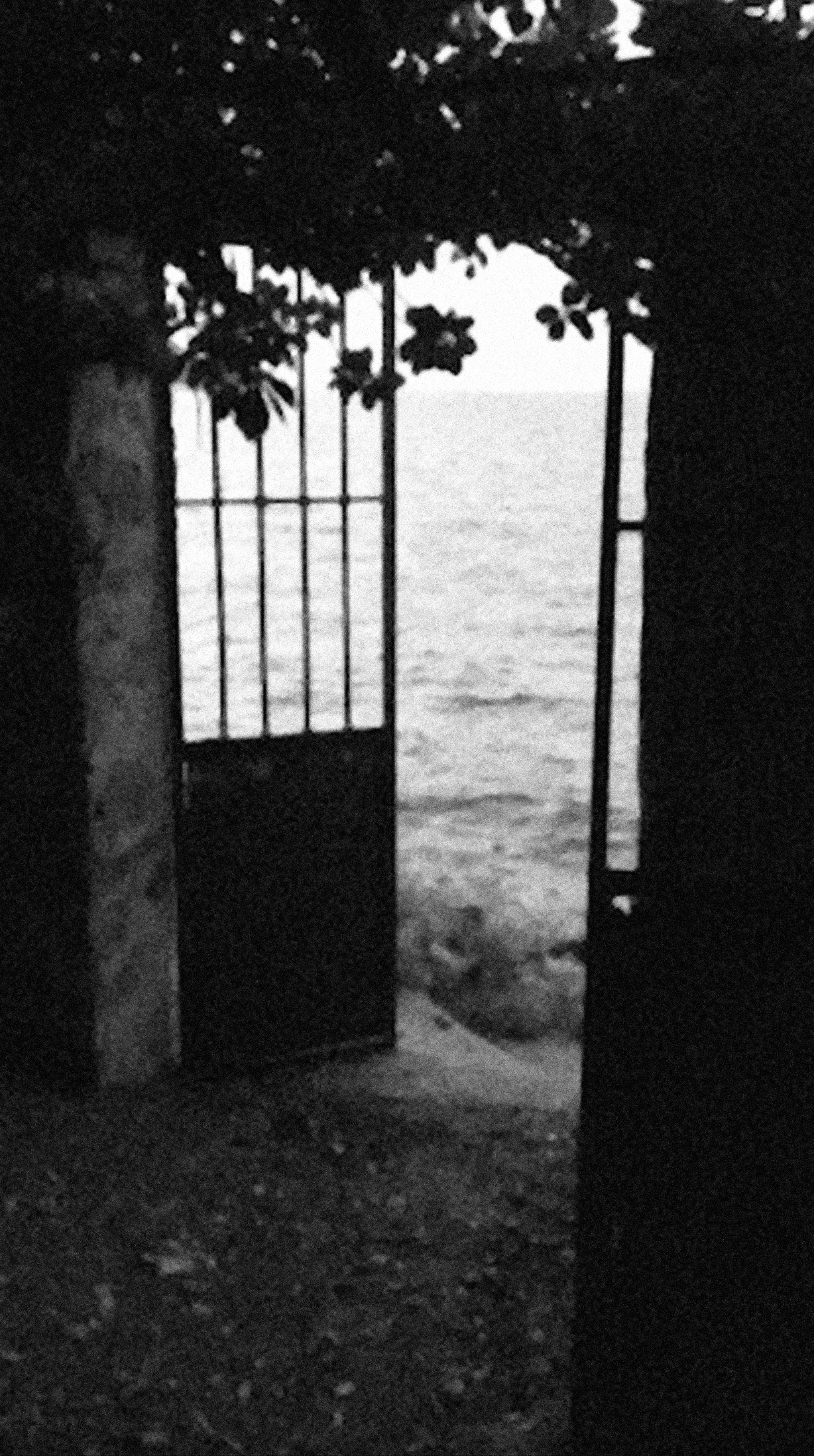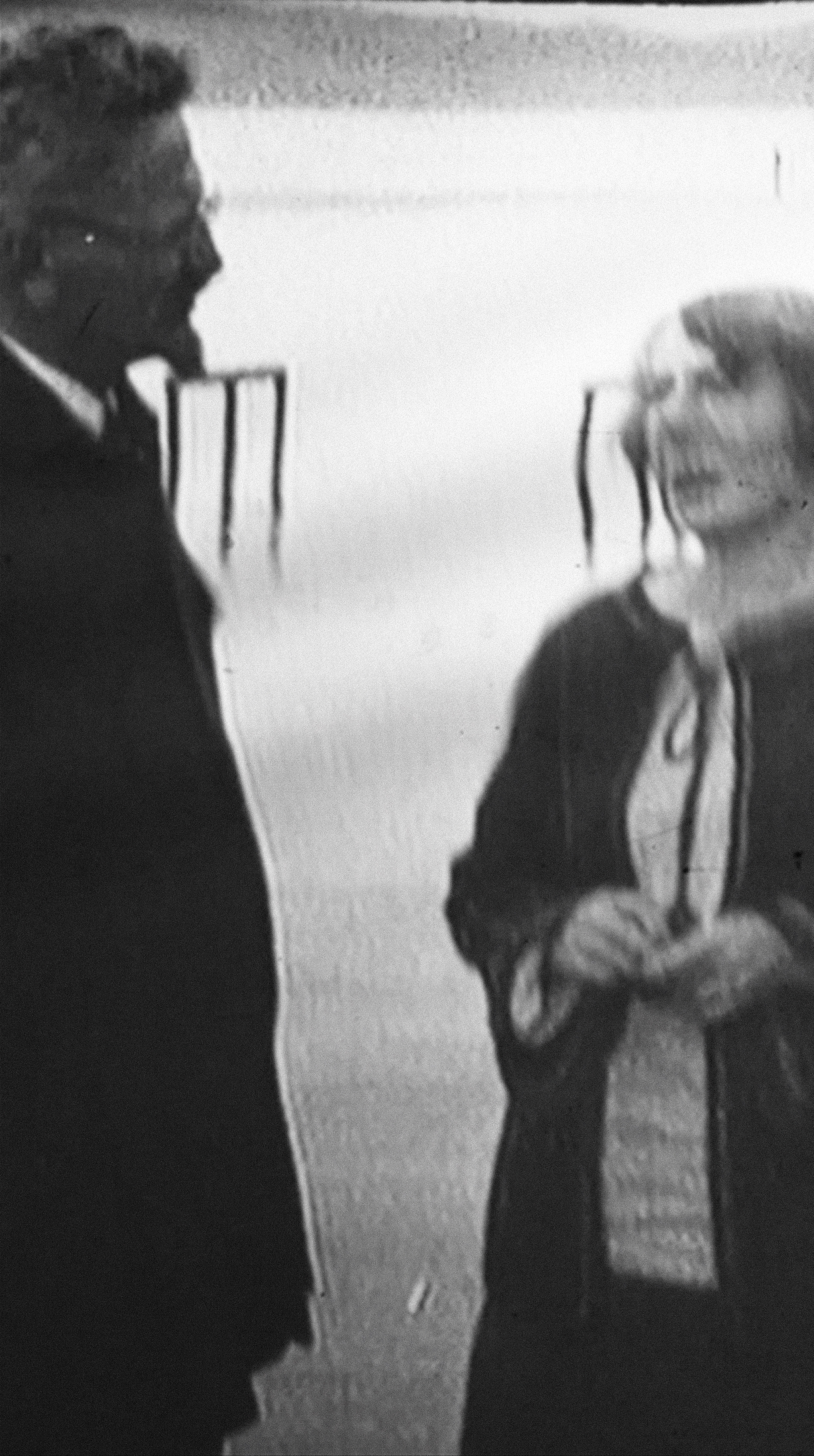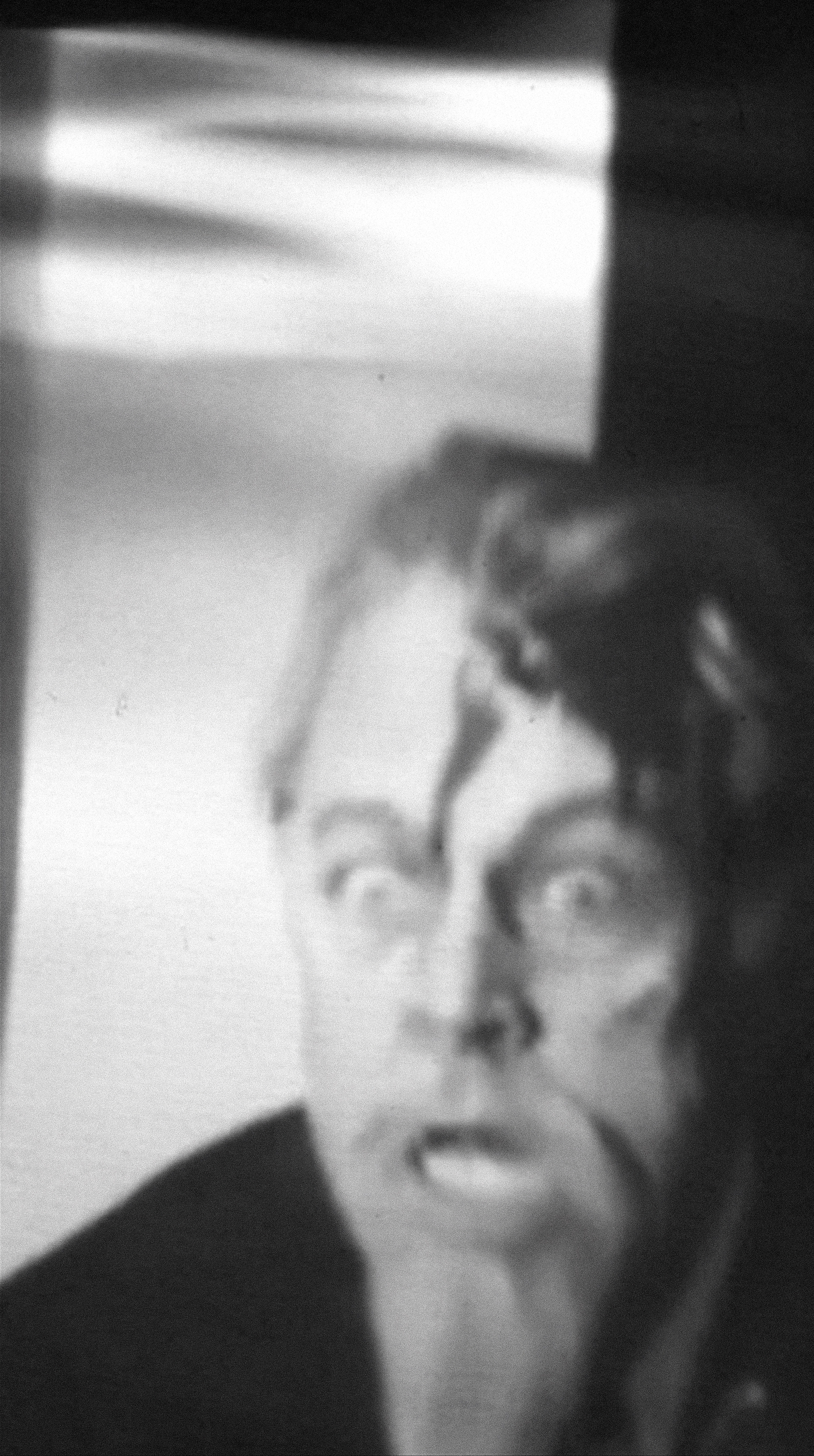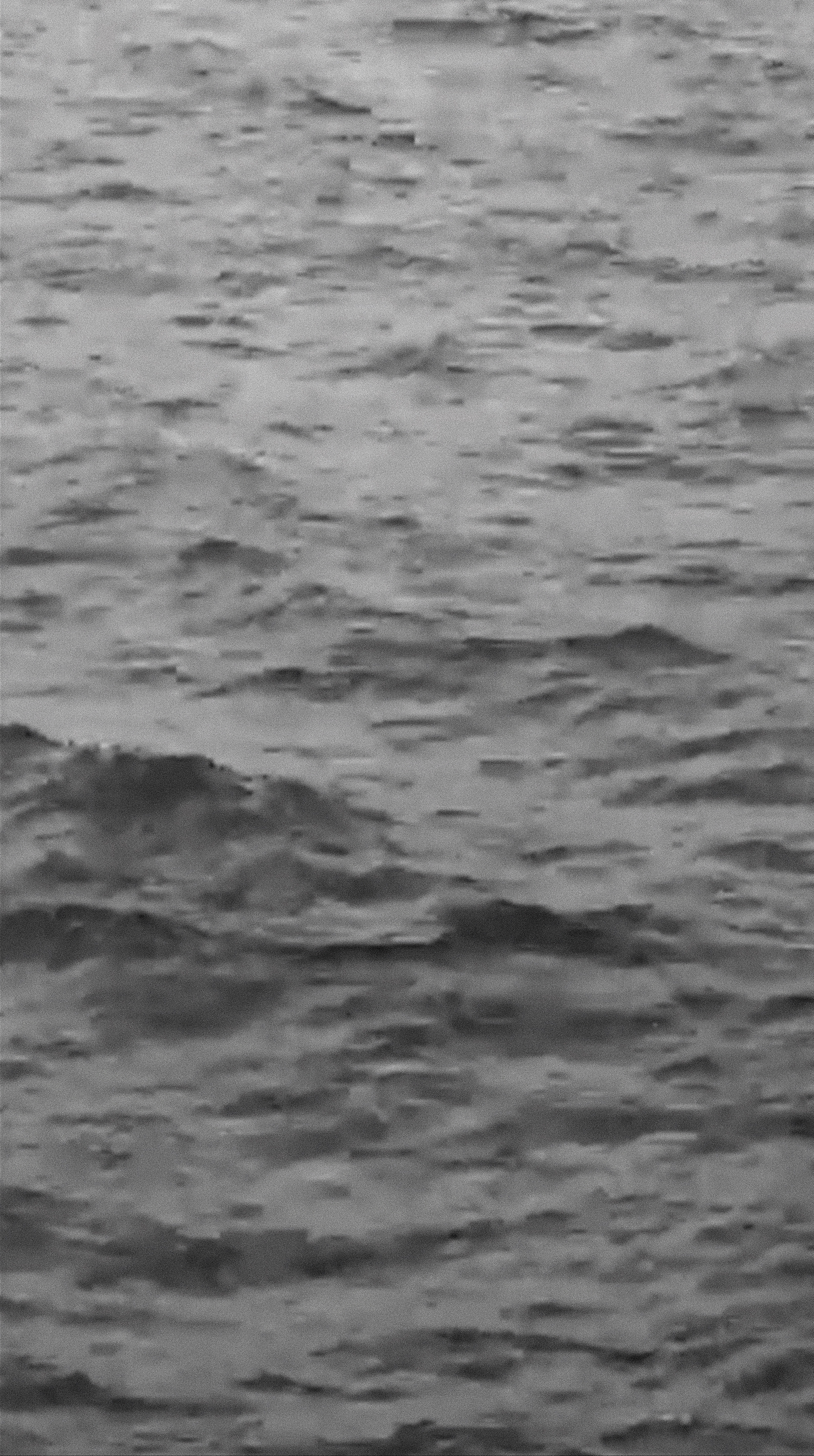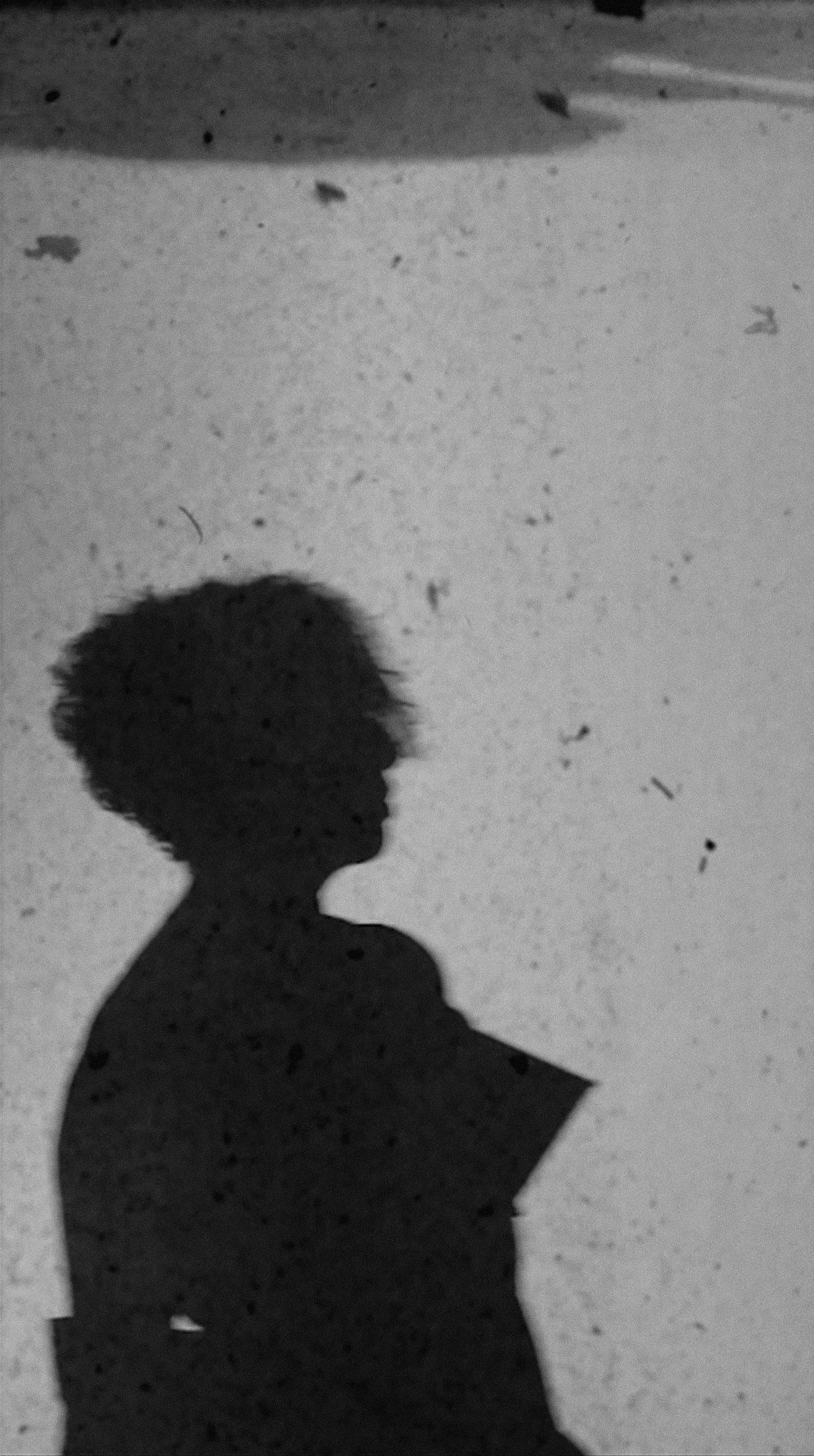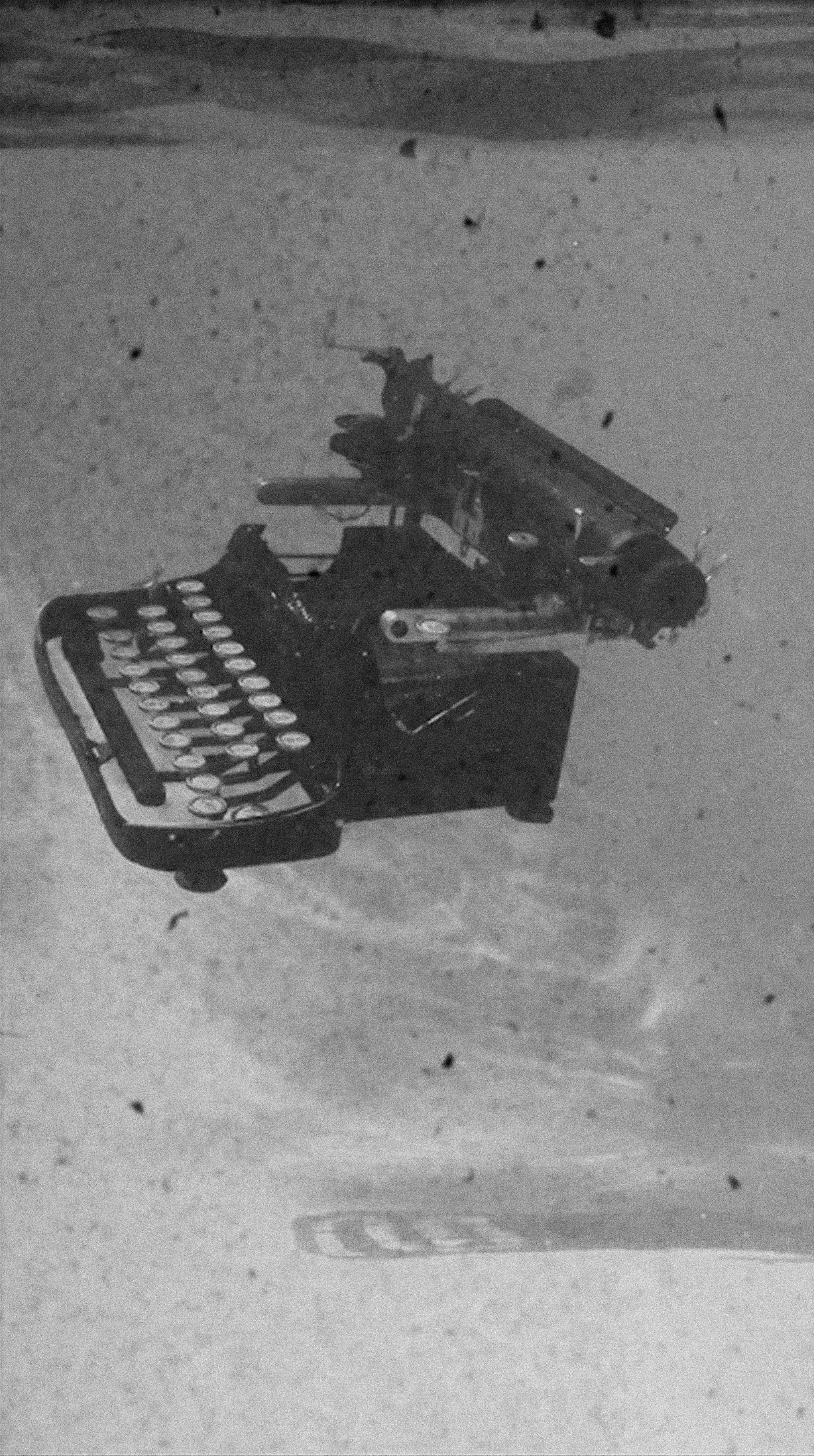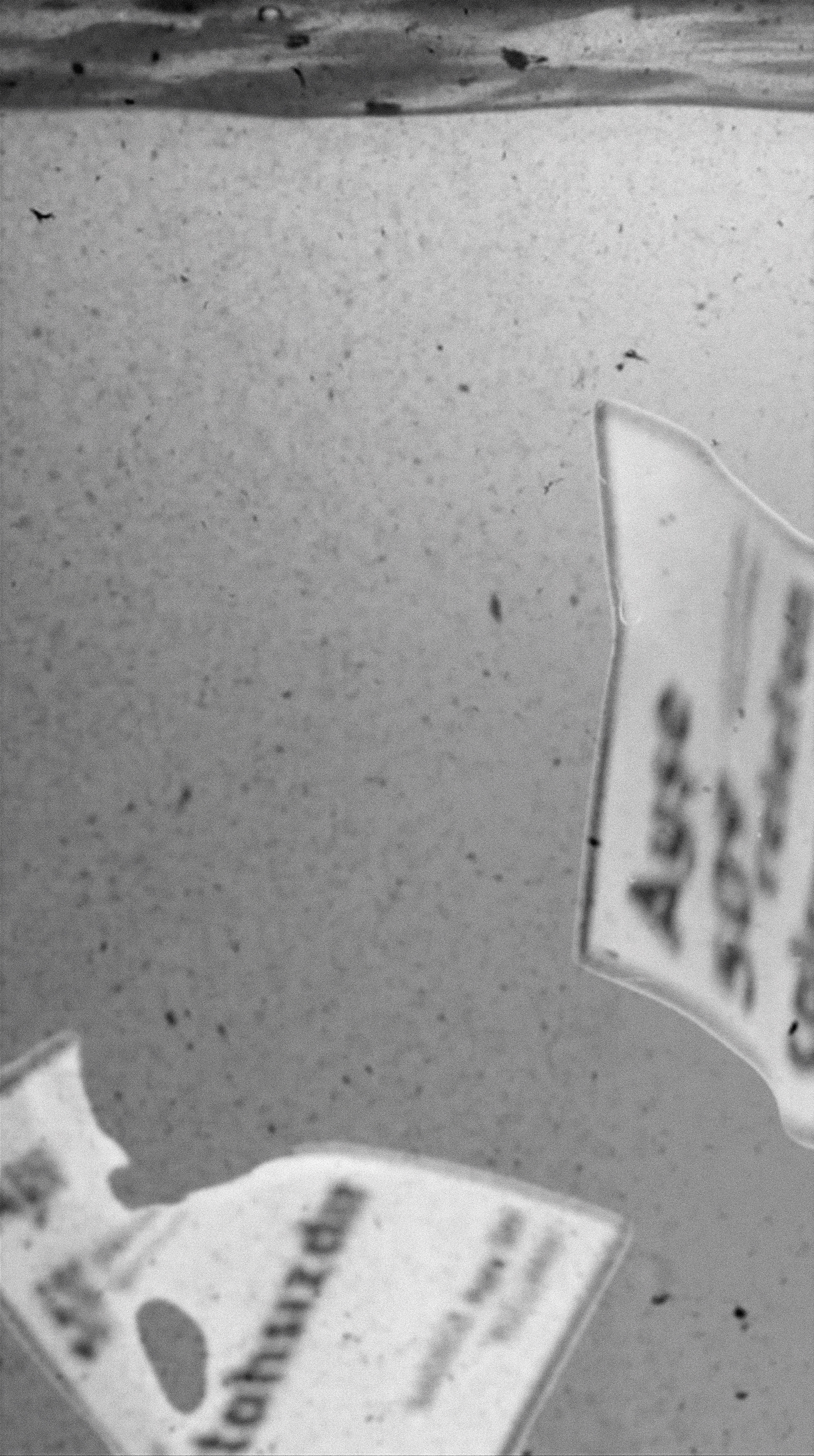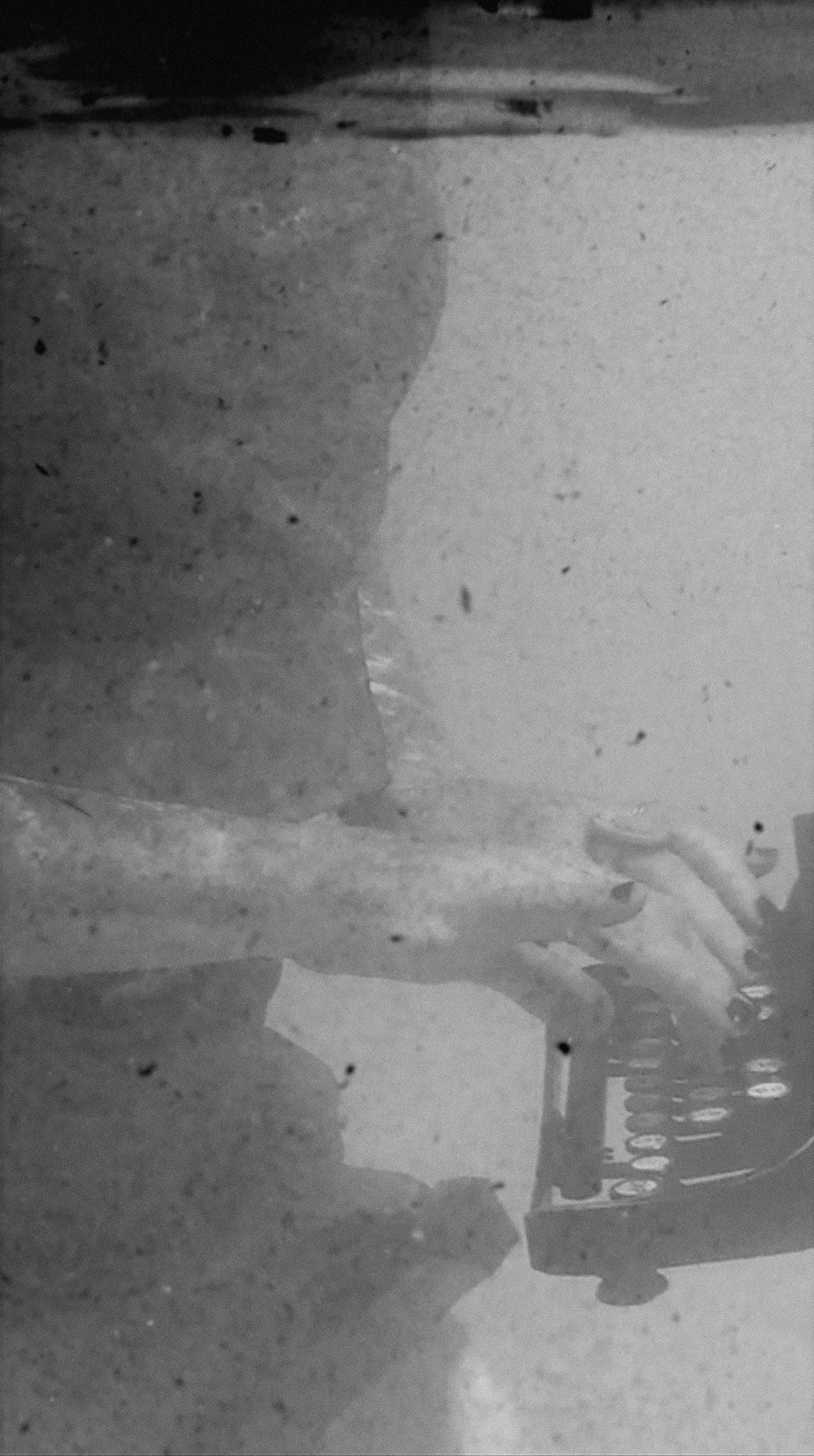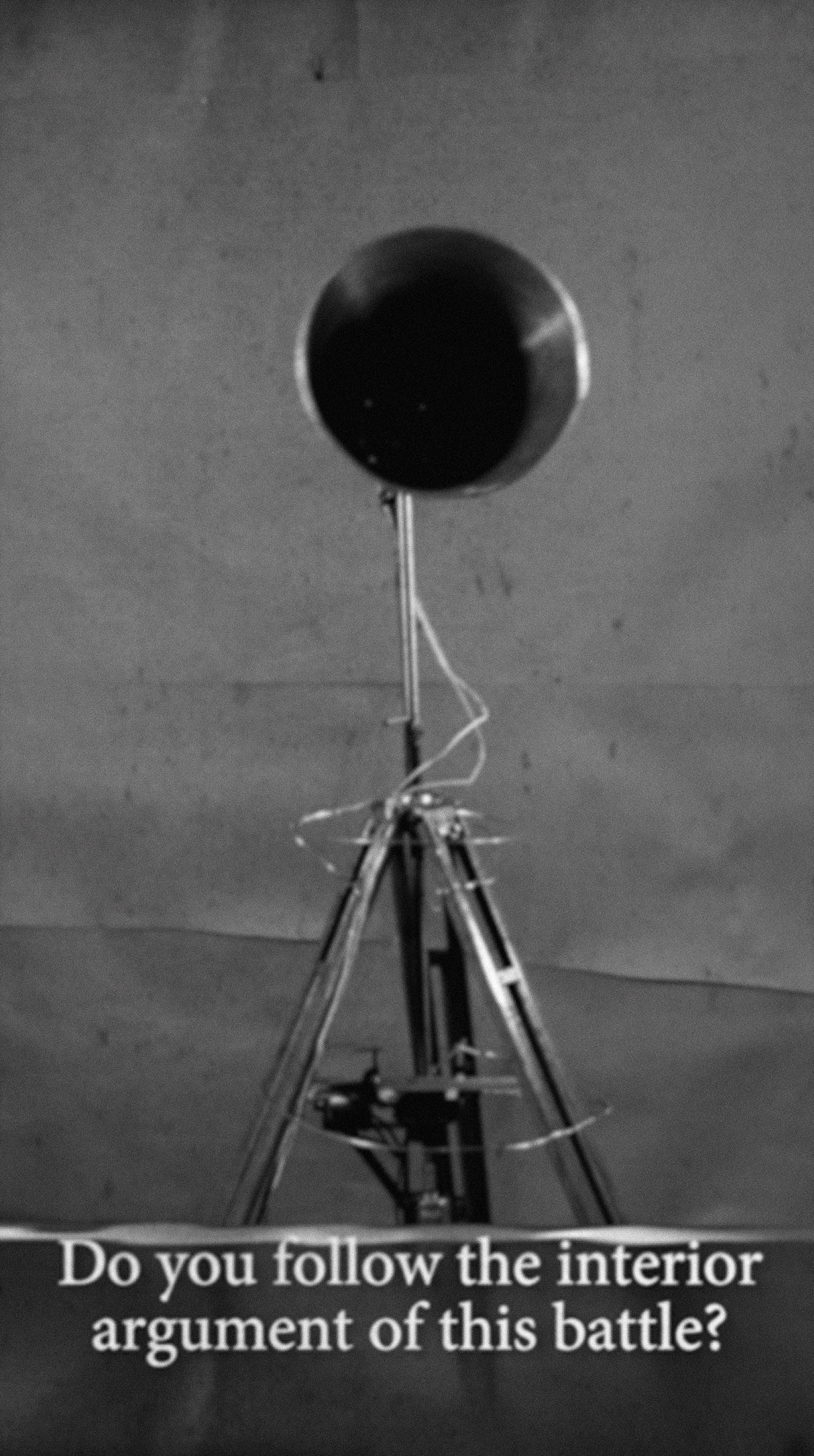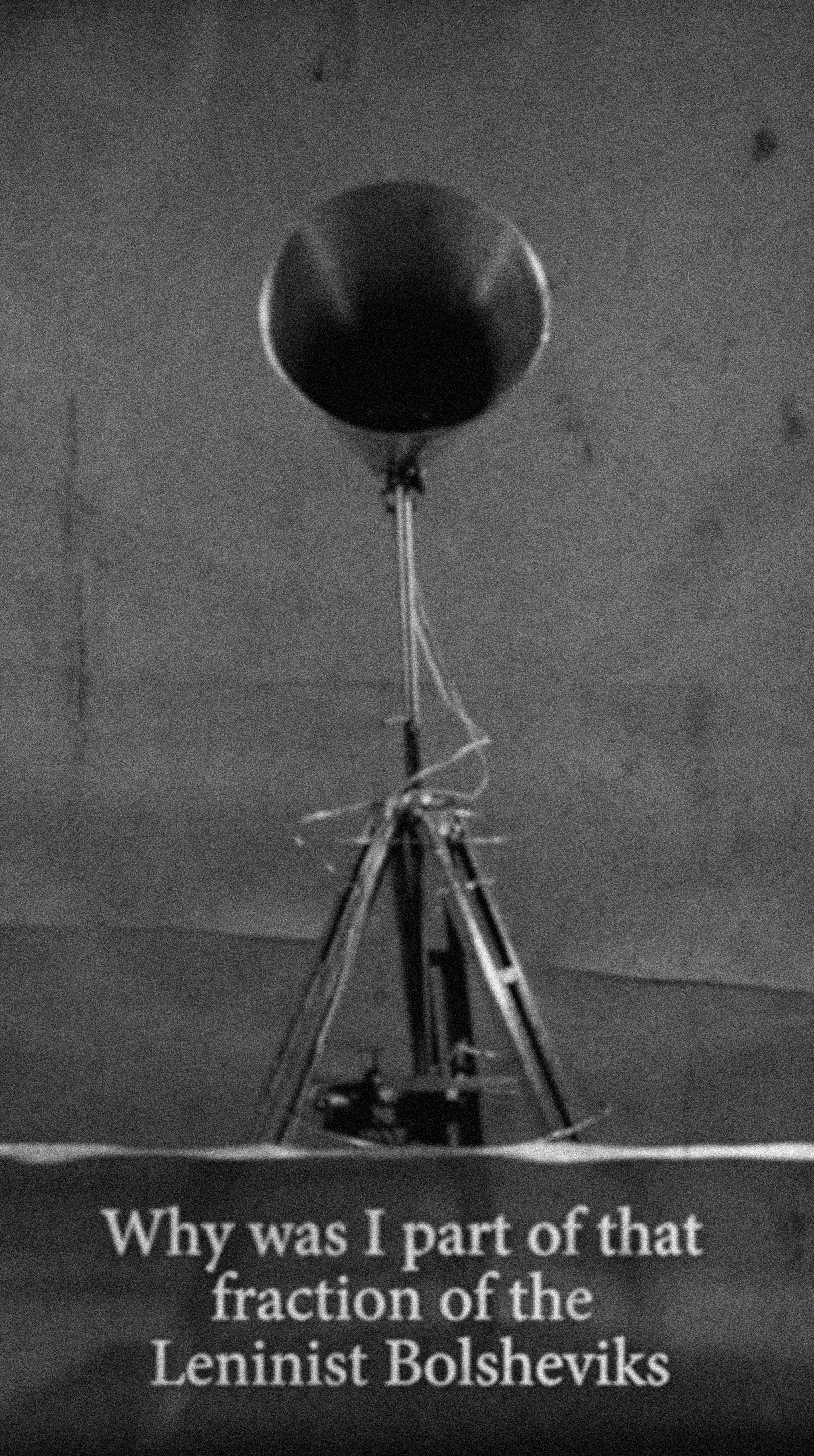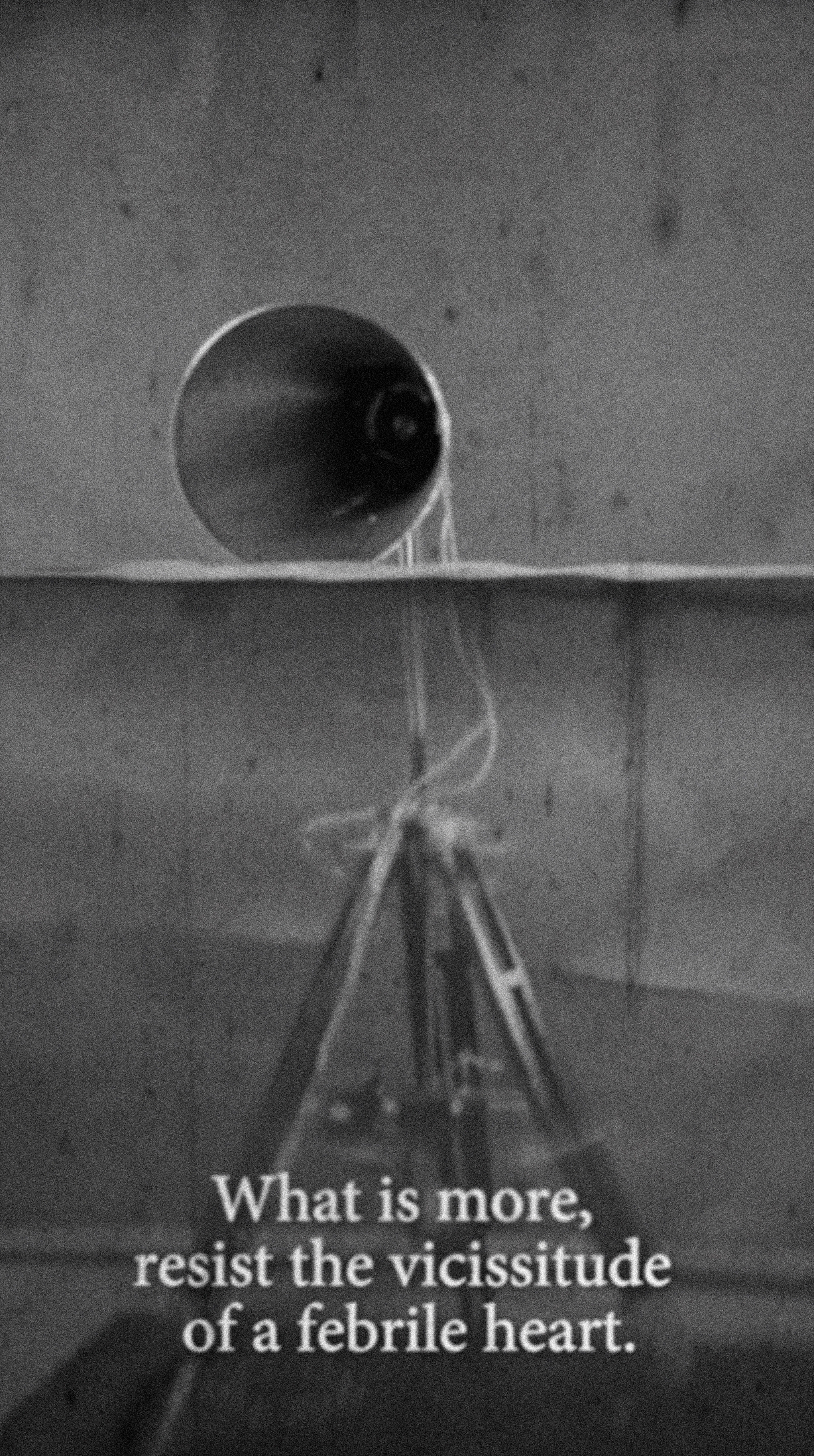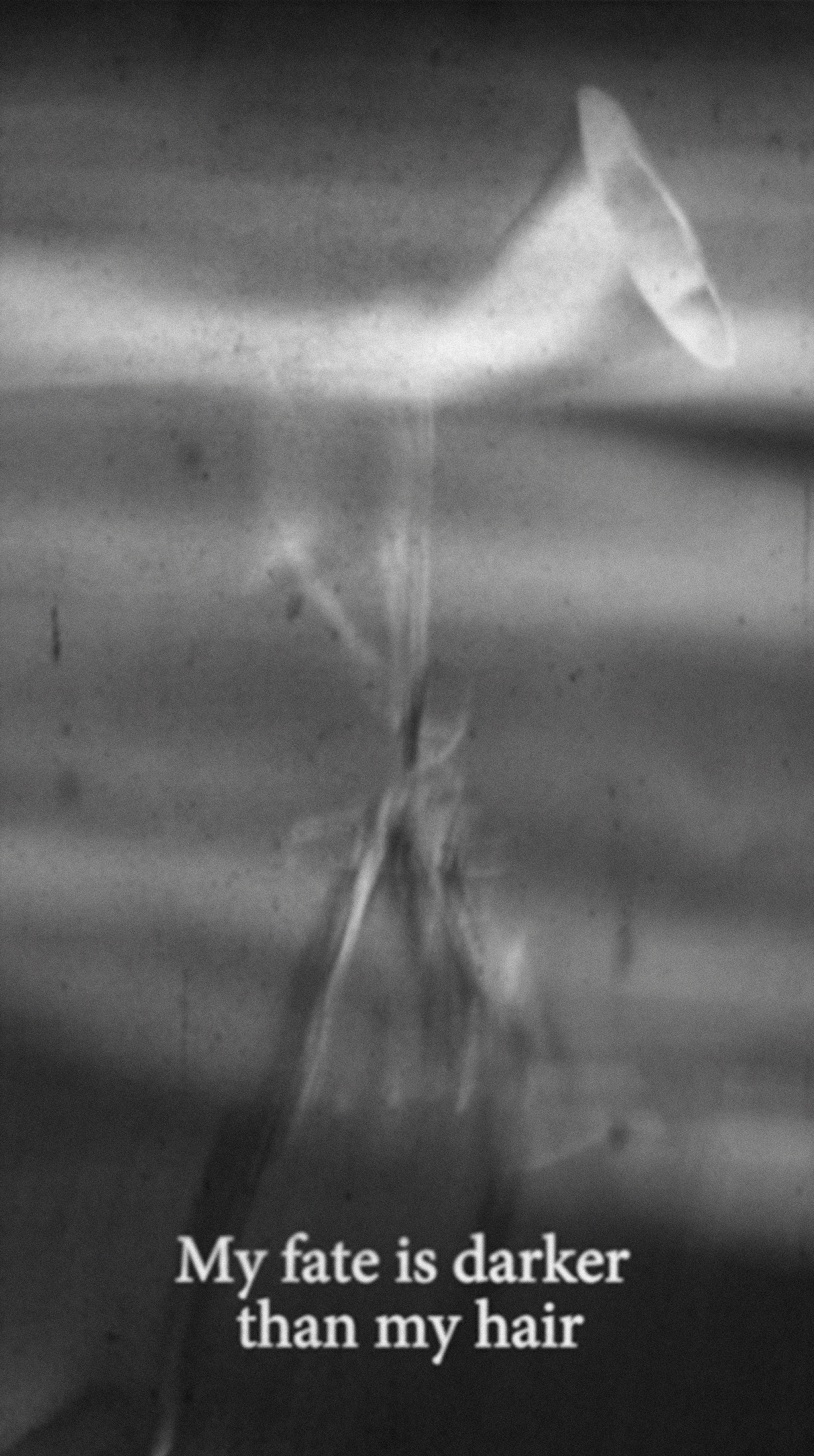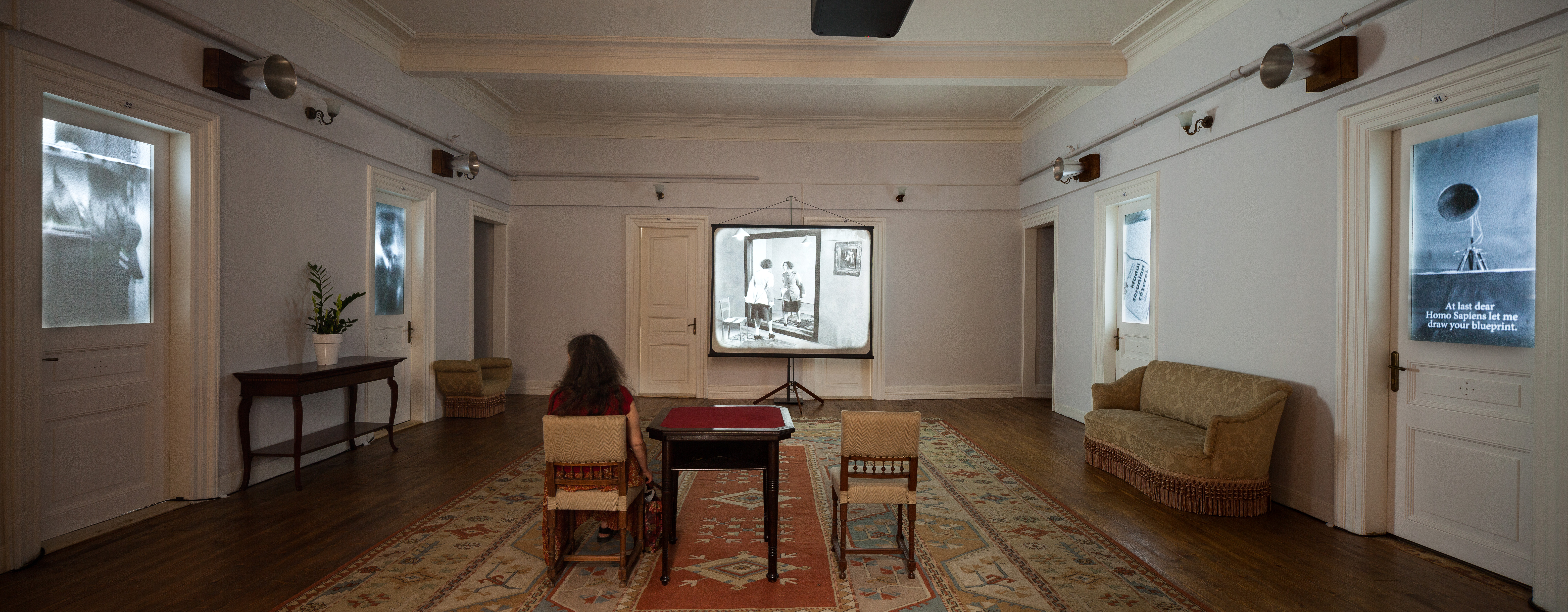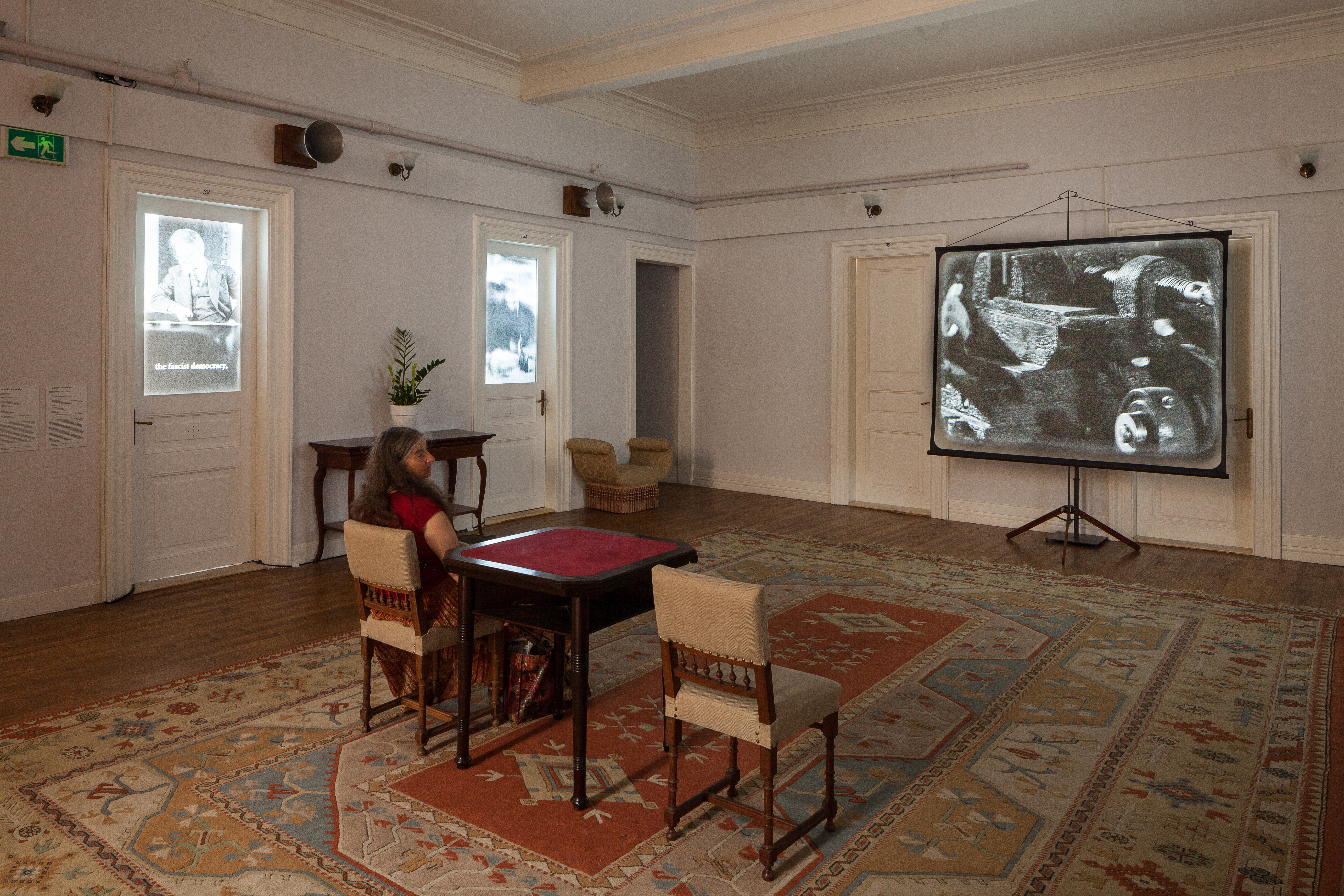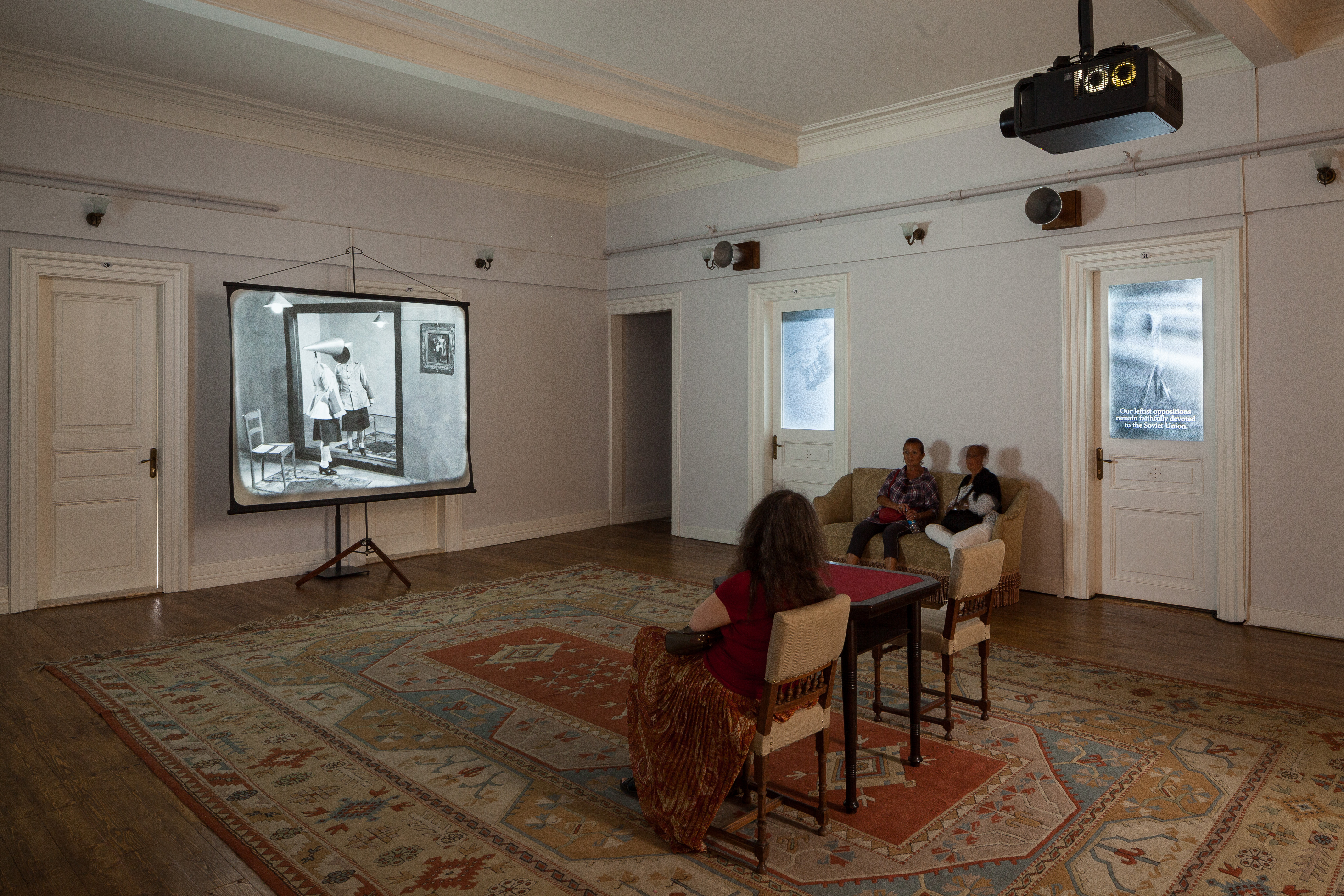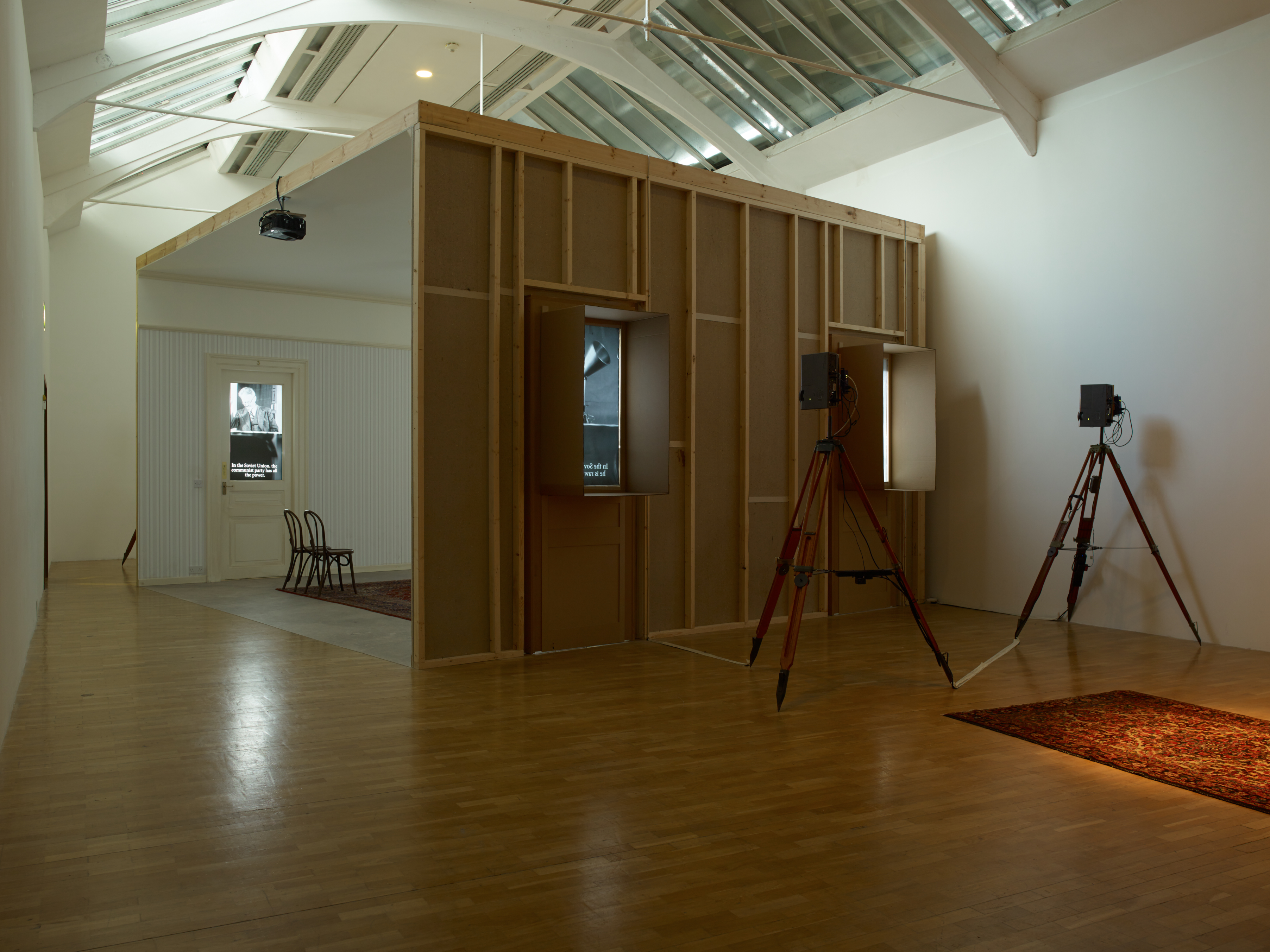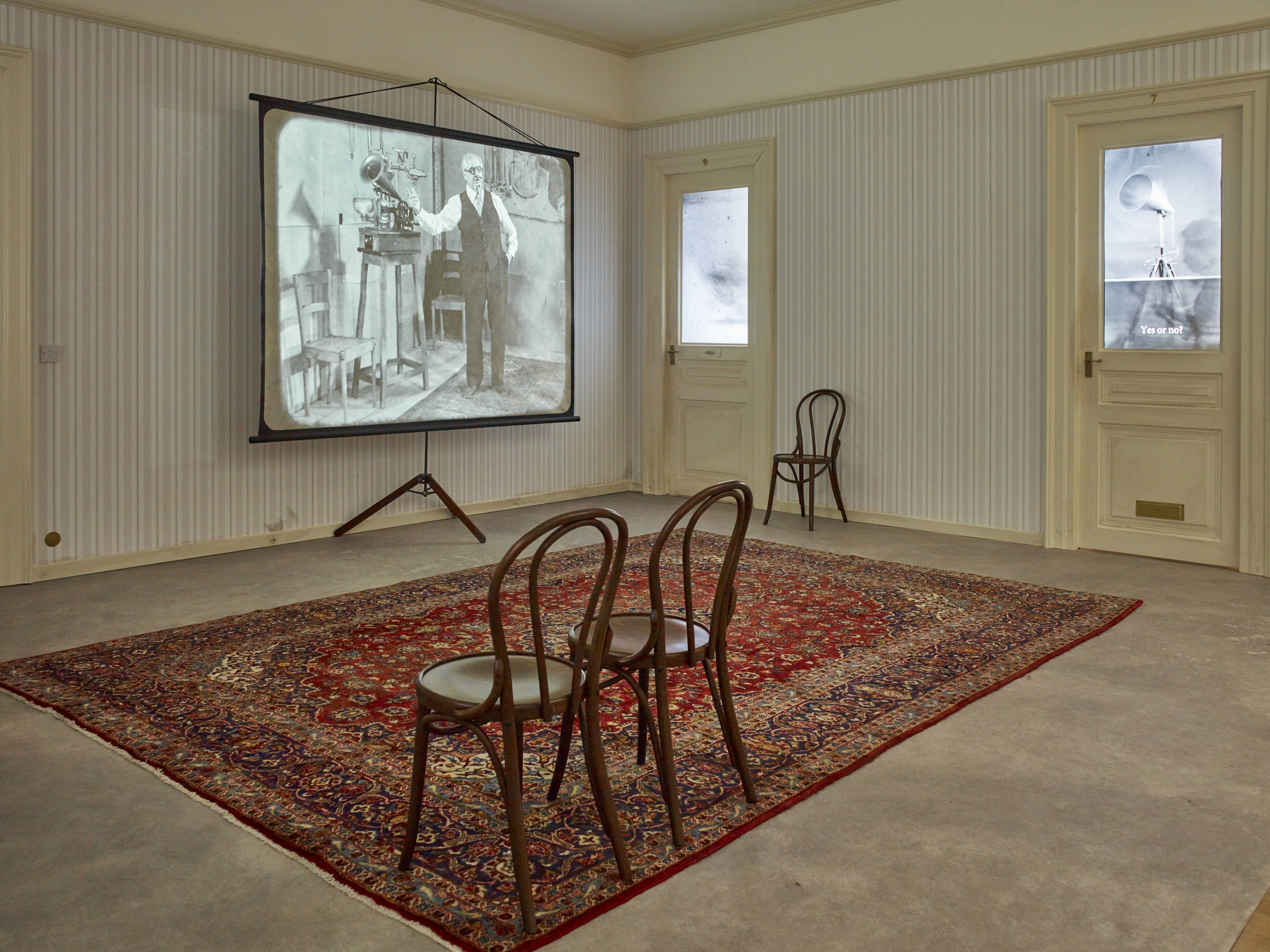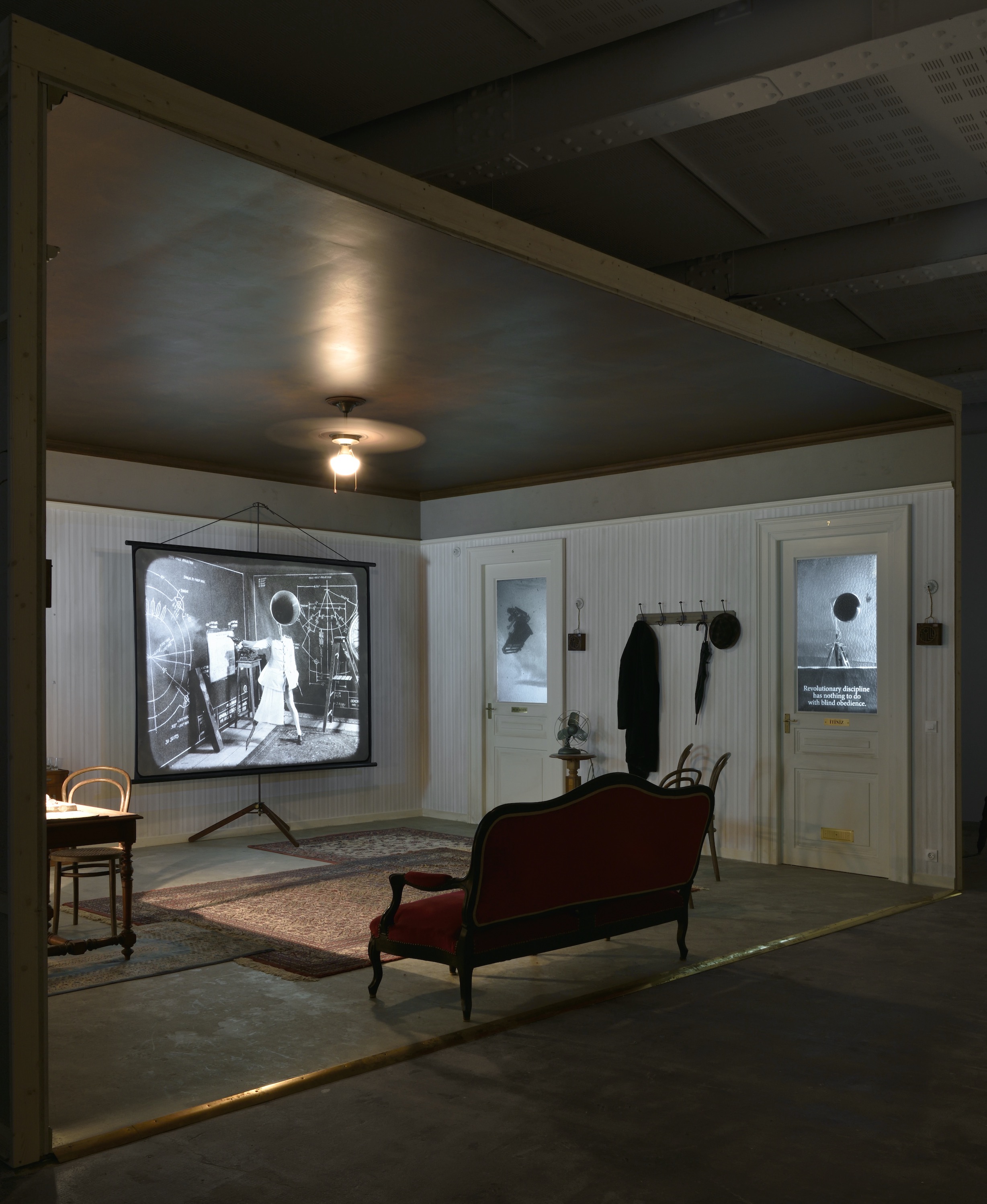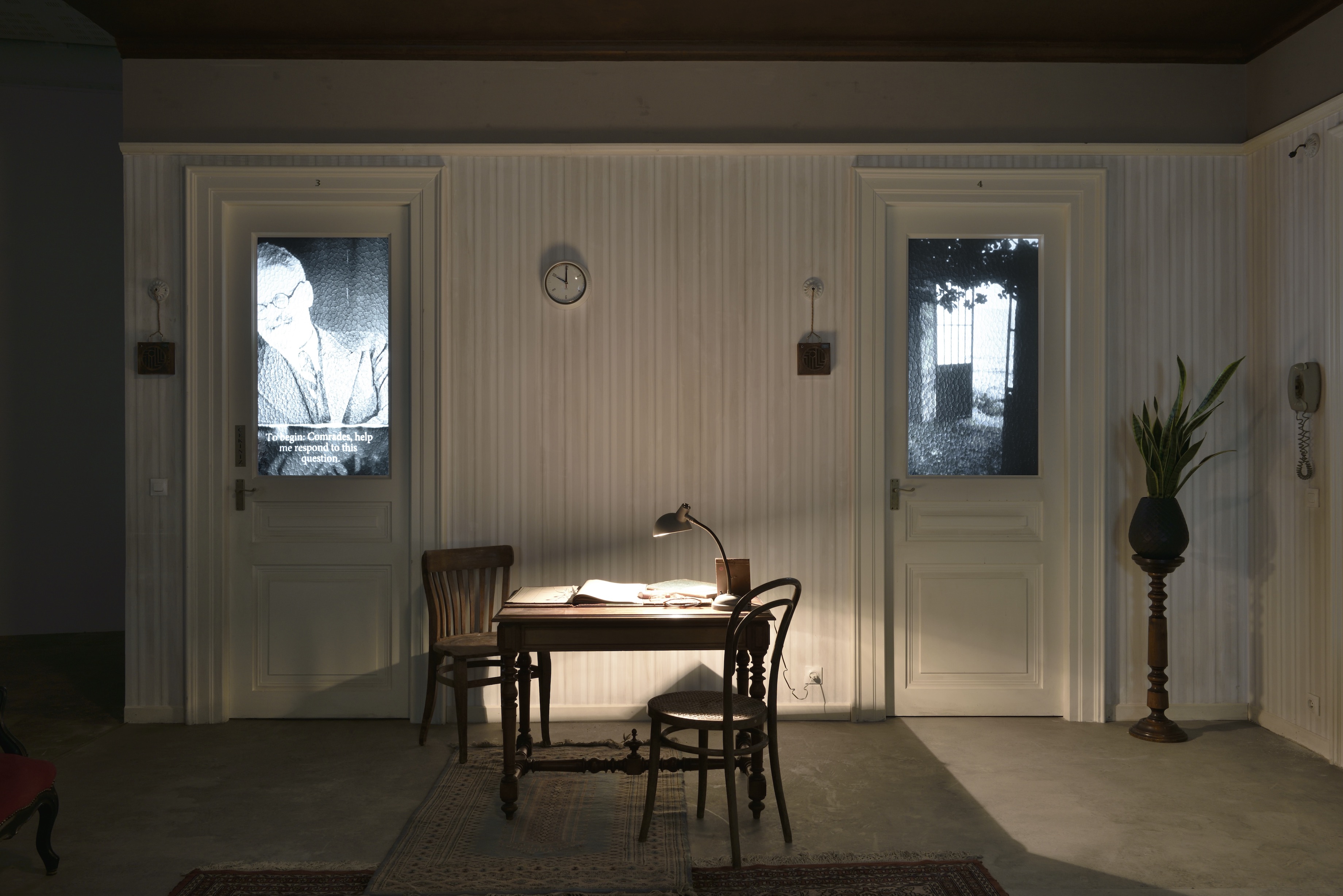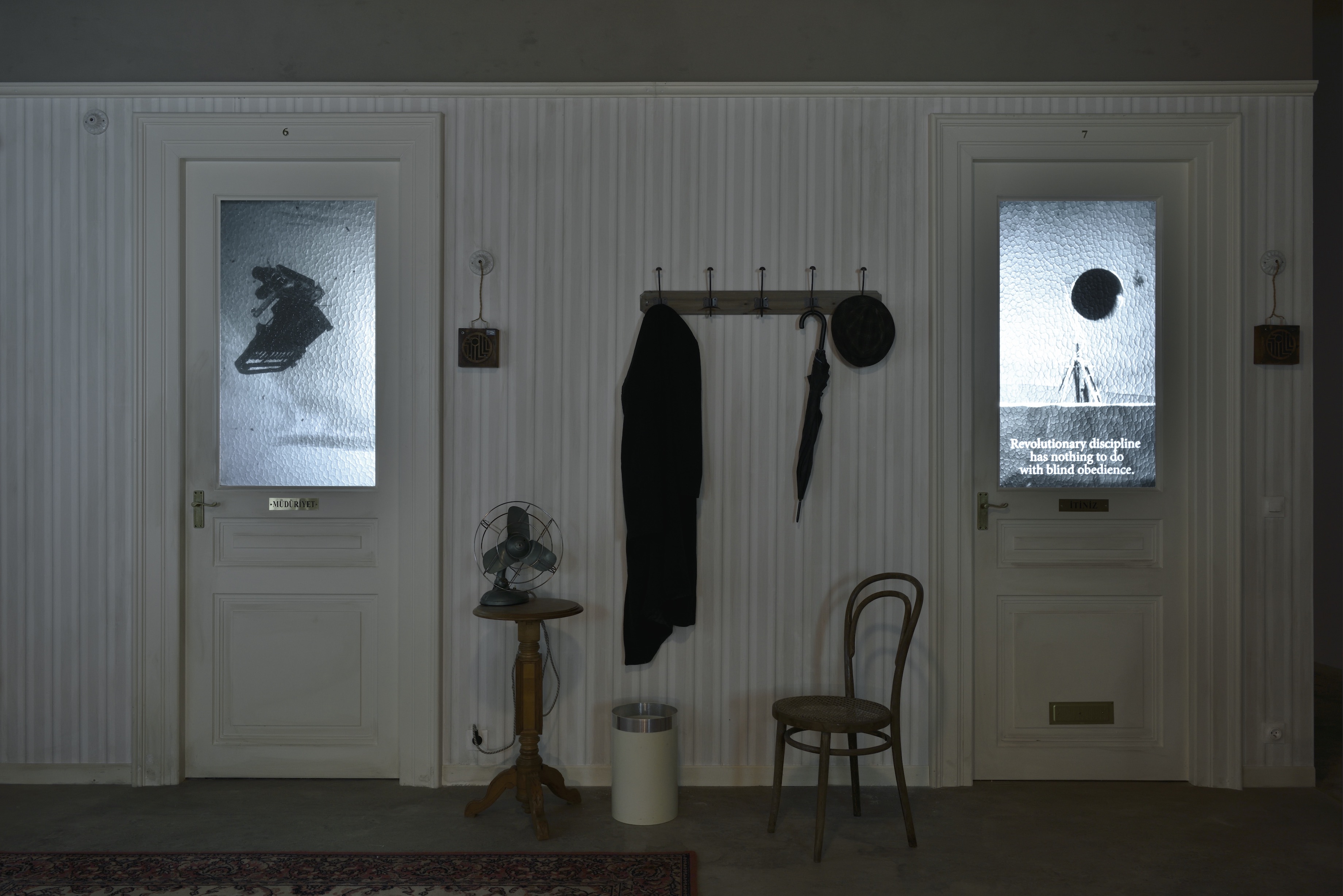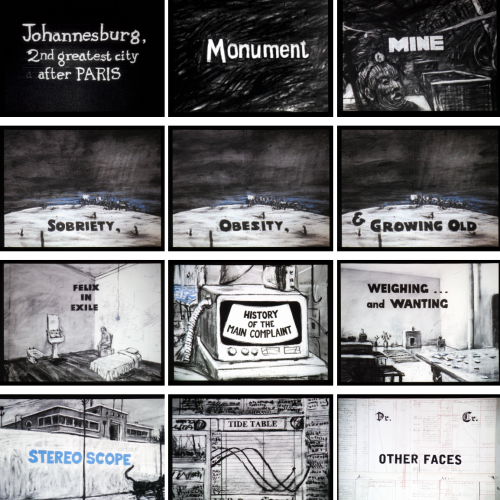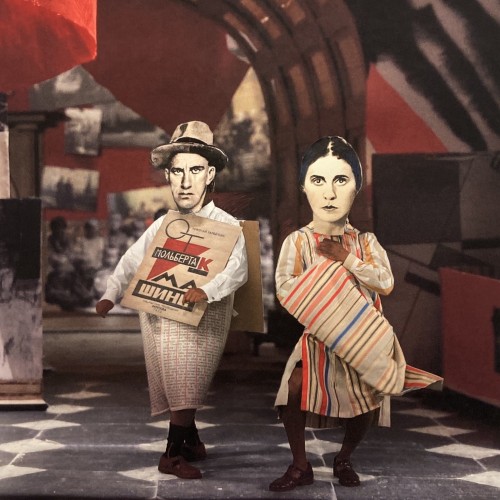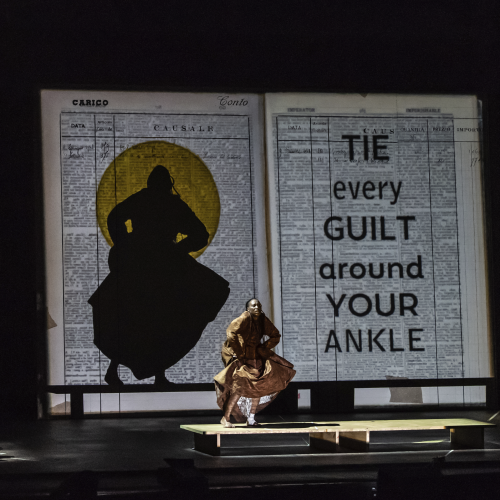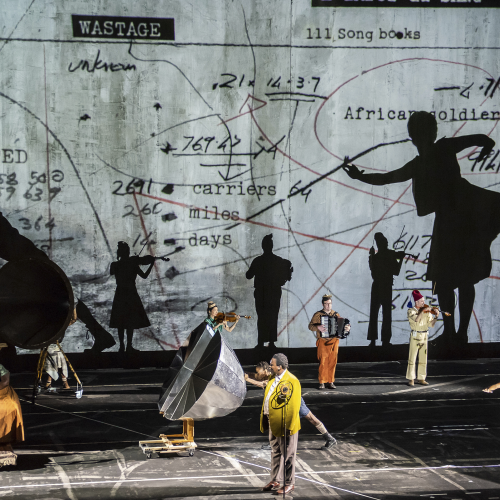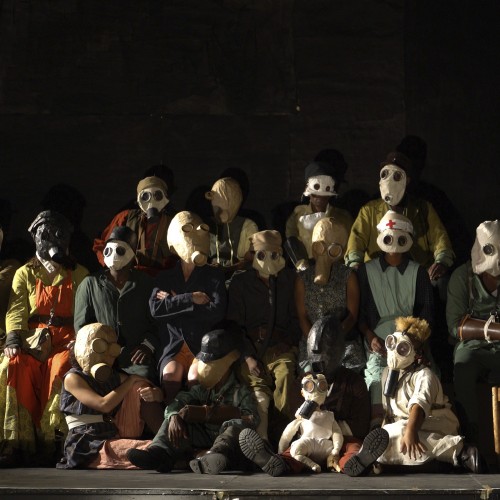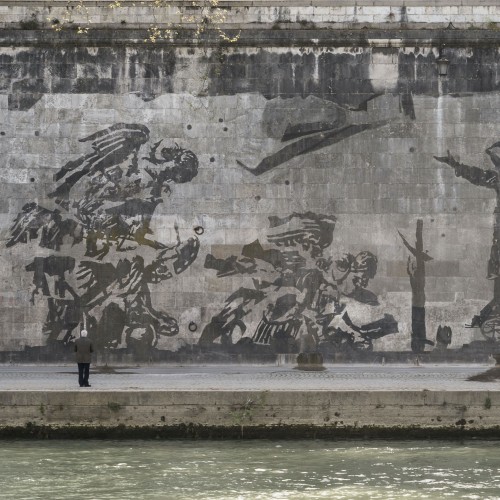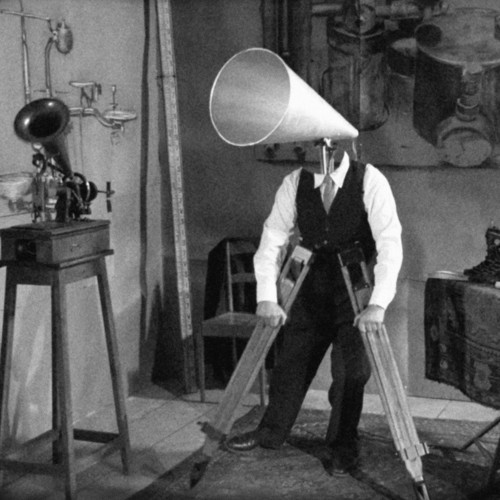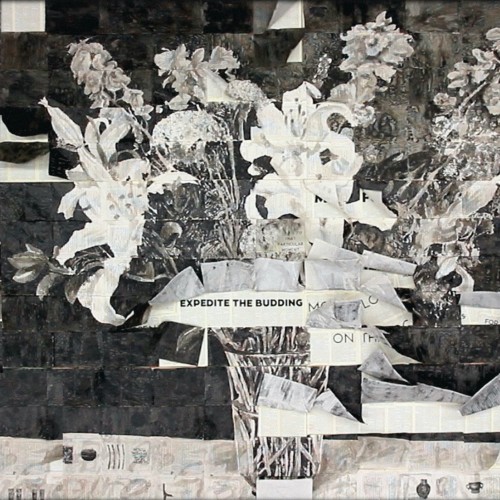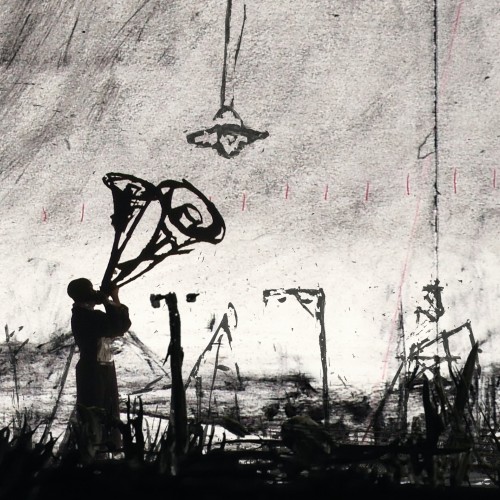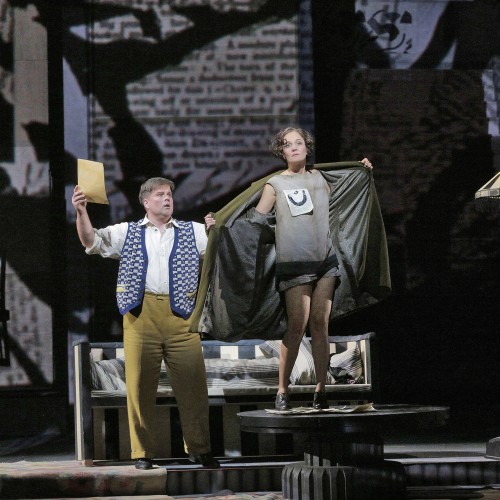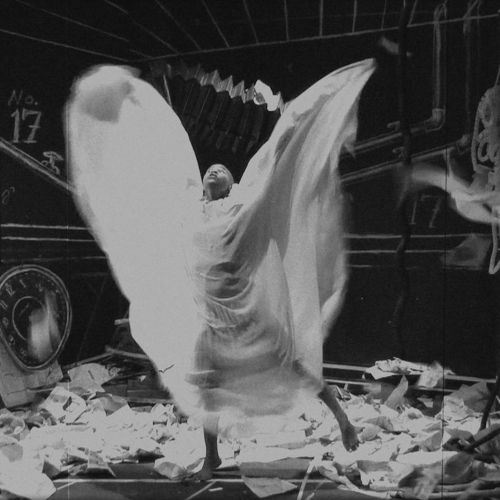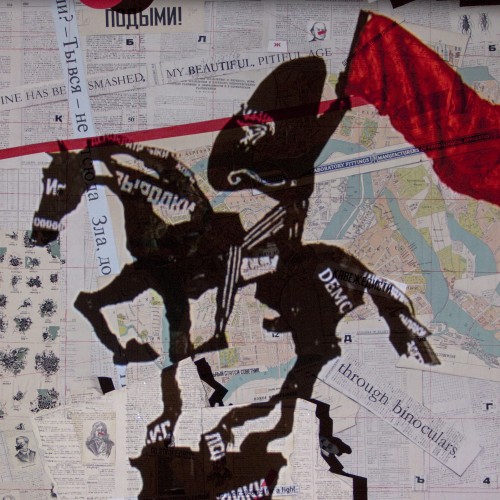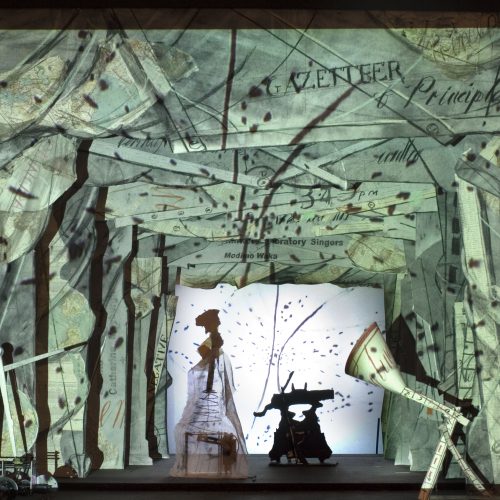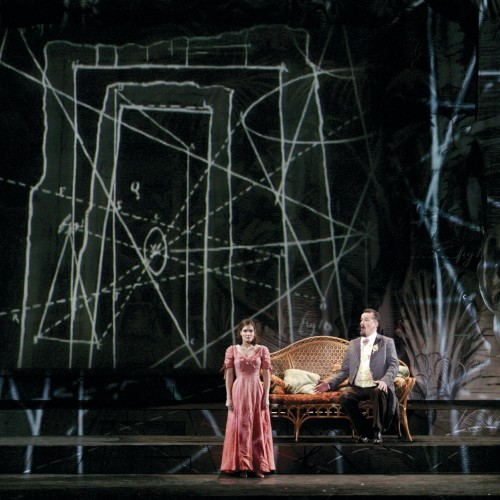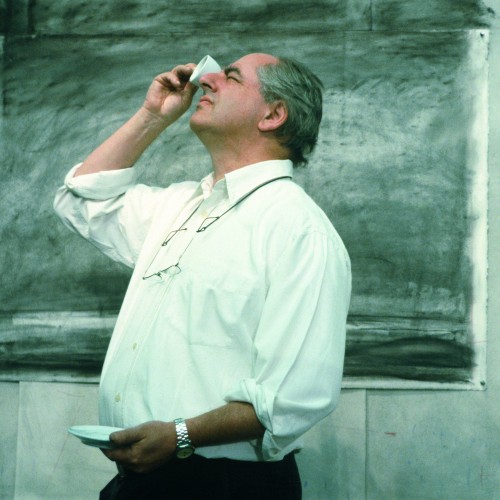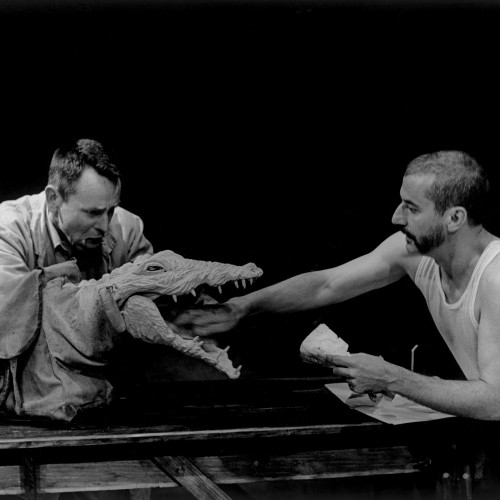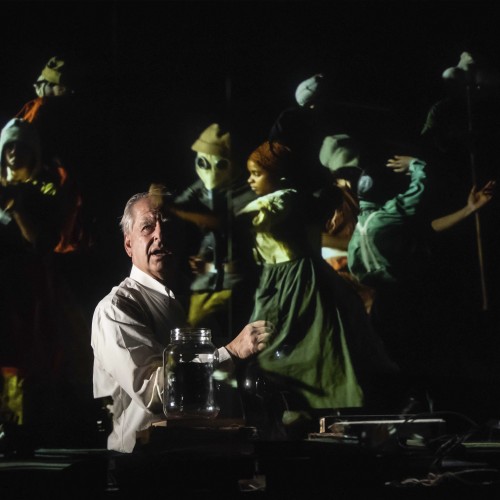Trotsky in Exile
The Istanbul Biennale: This was the concrete beginning of the project, an invitation by the curator to think of doing a work there, specifically to work on Büyükada Island which is a small holiday island about an hour and a half off the coast of Istanbul in the sea of Marmara. And I was told by the curator that Leon Trotsky had in fact been in exile on this island between 1929 and 1933. It was his first exile outside the Soviet Union and the house in which Trotsky had lived was by now a ruin. It was not available to use as a venue, as he left it many decades before and it had fallen into disrepair. So the idea of firstly of being in Istanbul, but for me particularly the idea of the presence of Trotsky and this visible ruin associated with him was the gode to start thinking of the project. I knew at once then that that would be the broad subject: Trotsky in Istanbul, Trotsky in exile. Both because of the sets of associations it had to projects I had worked on, such as The Nose, such as Stalin and art in the Soviet Union in the nineteen thirties. And so there’s a first connection between a biography, my own biography and interests and readings and histories that I was interested in and what the venue and the concrete possibilities coming from the world outside invited.
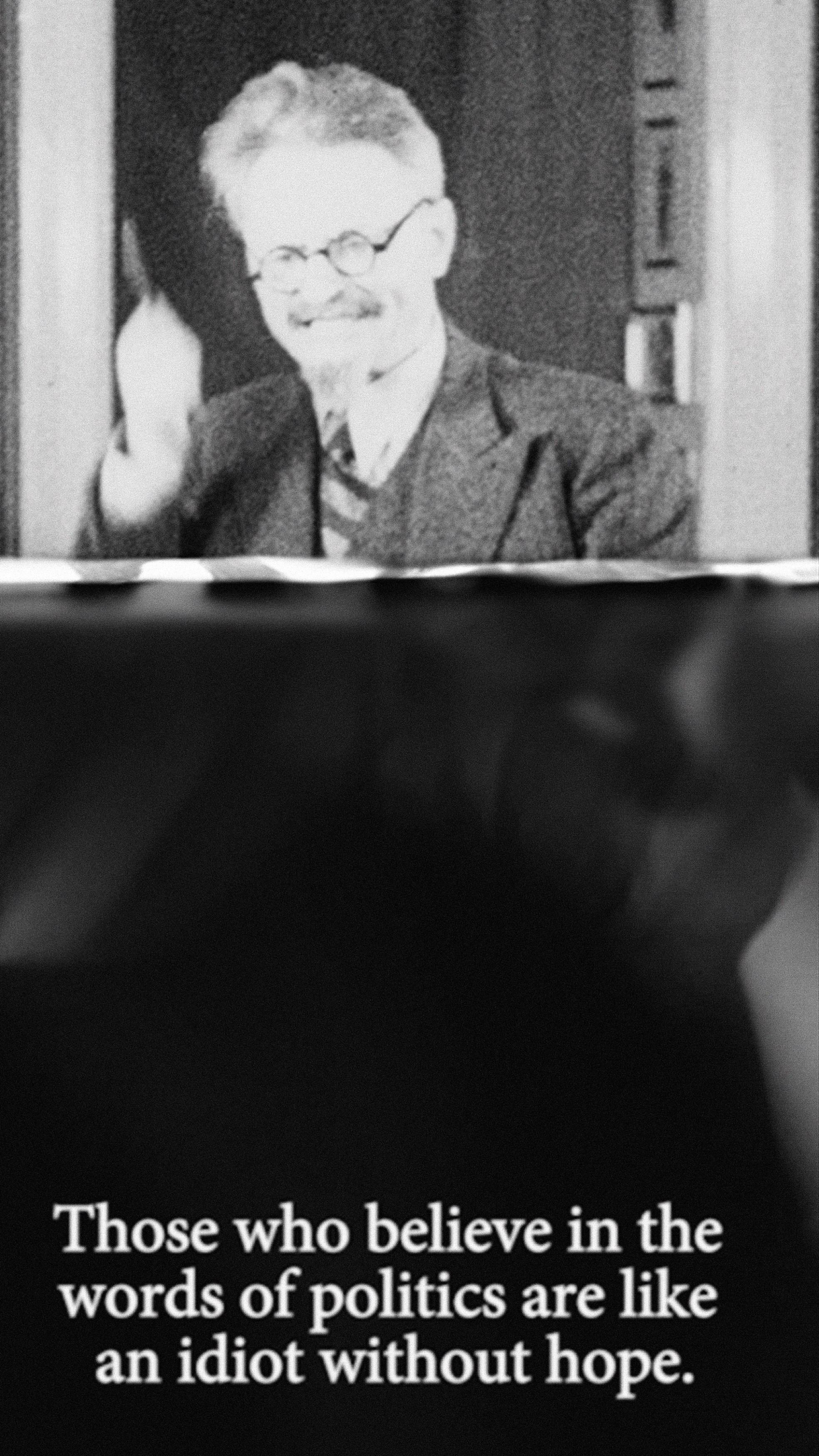
-
+ Credits
2015
5-channel video installation with four megaphones on tripods and scenography
HD video
9 minutes 55 seconds
Made for the 14th Istanbul Biennale (2015), Saltwater, curated by Carolyn Cristov-Bakargiev
Actor
Sue Pam – Grant
Musical composition & arrangement
Philip Miller
Video editing & construction
Žana Marović and Janus Fouché
Costume design
Greta Goiris
Director of photography
Duško Marović
Sound mix
Gavan Eckhart
Musicians
Voice
Joanna Dudley
Theremin
Janus Fouché
Bouzouki
Jannous Aukema
Piano
Philip Miller
Mazi composed by Necip Celal Andel, sung by Seyyan Hanım
Making
As the house itself was an impossible venue, a grand old holiday hotel, Hotel Splendid, which is about half a kilometre from Trotsky’s house, became a venue in which to work and specifically the first floor landing of the hotel. In other words there was a theatrical space offered, saying, let this be the space in which these reflections can happen.
One of the first things that I did was to make a model of this landing in the studio as a way of bringing Istanbul to the studio – as a place to be thought of, to be taken apart, to work on and to question of what could grow from this. The impulse was to say something about Trotsky and Istanbul using the theatrical space of the multiple doors and rooms leading off the landing.
Questions of machines and how they are used is an interest that has been explored in many ways. There are a lot of found objects in the studio that have been used for different projects to create sculptures, kinetic machines or mechanical objects. The megaphone is an obvious one because it’s about the multiplication and expansion of the voice. But a megaphone is also used because it’s one of the three figures that Cezanne describes as being necessary to describe the world, a sphere, a cylinder and a cone. And a megaphone is really just taking the idea of the form of a cone and putting that to work back in the world. So there have been many megaphones in different projects. But there were other machines made in the last years that are still sitting in the storeroom. This was an attempt to see, could one control a megaphone? In fact one of the collaborators who worked with me on this project hacked into a Playstation Connect system so that he could do movements with his arms and these movements would control the control the movement of the megaphone, a bit like a Theremin. In other words there’s no visible connection but as your hands move you control how the megaphone moves.
I came across a home movie of Trotsky that was found on Büyükada Island. In this footage, there is a completely ridiculous pair of scissors that emerges for eight frames, which he uses to open an envelope in his office. It goes past in a flash. There’s something in that moment of those huge scissors that triggered an association in my memory of one of the Marx Brothers’ films, which were made during this period and were great favourites of Trotsky and particularly of his wife. There’s a moment I remember in one of them, where Harpo is trying to pick-pocket Groucho but Groucho holds onto his wallet firmly. Harpo then emerges into the frame with a huge pair of scissors and slits Groucho’s trousers all the way up to get it. There was something of this outsized, Alice in Wonderland pair of scissors that Trotsky was using that drove me to work with that as a piece of material.
So there’s a way in which the archive is itself suggesting a kind of theatrical prop. It’s a misreading of Trotsky – Trotsky’s not just using big pairs of scissors – but nonetheless it’s something that starts to leap out, demanding connections in the studio.
One of the pieces of archival footage that I found in Amsterdam was an eight minute speech given in French and it’s a speech not given to a huge crowd. The idea was he would give this speech to a crowd in France but never got a visa, so it’s a recorded speech that was then broadcast. So it’s the performance, the performance of Trotsky performing Trotsky – how he would have done in front of a crowd. The gestures that he has are not the gestures of reading a small text but the gestures of someone thinking about how it should be performed. There’s a kind of historic specificity to the nature of the gestures and so there’s a kind of theatricality that starts to emerge. As one watches the speech, one understands that it’s his real beard, but there’s something of Groucho Marx in the artificiality of that beard.
O Sentimental Machine
Five channel film installation with scenography
O Sentimental Machine, installed at Marian Goodman Gallery Paris, 2017
Here’s another completely different starting point to think about for the project: it’s about what is already there in the studio. What is the detritus? What are the unused parts of the archive that surrounds us which will also come into the project and make it happen? In the studio this means very much in the storerooms, on the walls, things made for other projects. And there were several pieces made for other projects that came into it.
This was a fragment of a secretary for a politician in a film called More Sweetly Play the Dance. It was an improvisation with an actress, Sue Pam-Grant, as the typist, seeing what could be done on a chair and with a typewriter. When I started work on this project, I thought that this would be a chance to allow this image to develop further, that one this stenographer or secretary of Trotsky could be a character. I thought, we’ve got the landing of the hotel, where there are several rooms. She can be in one of the rooms, an image of her or an actress playing her and we can have that as one set of associations. That was also partly prompted by a biography I had read of the children’s author Arthur Ransome who wrote Swallows and Amazons, who had in fact had a separate history as a journalist in the Soviet Union and had in fact married Trotsky’s secretary. So Trotsky’s secretary had been in my head just because of the recentness of reading that biography.
Projected onto the pane of glass in one of the doors of the installation there’s a complete eight minute speech of Trotsky’s where he addresses what’s happening in the Soviet Union at the time, urging his comrades help him to respond to the question of why he’s part of the faction of Leninist Bolsheviks, who are in an antagonistic position with the current politics of the Soviet government. Another of the doors has a series of advertisements for the perfect machine that can do everything and the third door has a succession of pieces of archive footage like the Czar swimming and a parade of tanks, which all become submerged in water. In the last door, is the megaphone singing its sentimental song called Mazi (The Past), a Turkish song from the 1920s:
The past, I was also in love once, it burnt my life out,
Realized that it was worth my youth that I have lost,
Though I yielded to her she never became my lover,
Eventually I fell and died in the green sea of her eyes,
Never slept on her chest, never had a kiss,
Years have passed, she has also forgotten me,
Never held her around the waist but never gave up hope,
It is a sad story that took her away from me,
She became somebody else’s lover and happiness,
My heart has been in ruins ever since.
Exhibitions
More
More projects
Credits
2015
5-channel video installation with four megaphones on tripods and scenography
HD video
9 minutes 55 seconds
Made for the 14th Istanbul Biennale (2015), Saltwater, curated by Carolyn Cristov-Bakargiev
Actor
Sue Pam – Grant
Musical composition & arrangement
Philip Miller
Video editing & construction
Žana Marović and Janus Fouché
Costume design
Greta Goiris
Director of photography
Duško Marović
Sound mix
Gavan Eckhart
Musicians
Voice
Joanna Dudley
Theremin
Janus Fouché
Bouzouki
Jannous Aukema
Piano
Philip Miller
Mazi composed by Necip Celal Andel, sung by Seyyan Hanım
